January 3
Up for breakfast with the Kipharts at the hotel. Some of the young people at the wedding, including Ayo, the groom, Dayo, the bride’s sister, and Tobi, the bride’s brother, come by to visit. They partied until 3 or 4 AM, but look no worse the wear for it. Ah, youth.
So, maybe this is a good time to tell you a bit about the Olopade children. Feyi, the bride, is the eldest. A graduate of Penn and Harvard Business School, she an entrepeneur, working on developing a shareable cancer data base. Dayo has just graduated with a joint degree from Yale Law School and it’s School of Management (the business school) and will take the NY bar next month. She took time off from Yale to write a fascinating book, called Africa:The Bright Continent, which I highly recommend. The “baby”, Tobi, who is 6’3″, was completing his applications to business schools–Stanford, Harvard and Wharton–by the poolside, and needed to rush back to his job at Credit Suisse in New York. He speaks fluent Chinese. A bit intimidating, eh?
We and Susie and Dick had a driver (and an escort and a guard) who drove us into Lagos, through the large, bustling market. Were it not so hot (99F), we might have wandered on foot, but, as it is, we were content to drive through in air conditioned comfort. Here are a few photos taken from the van:
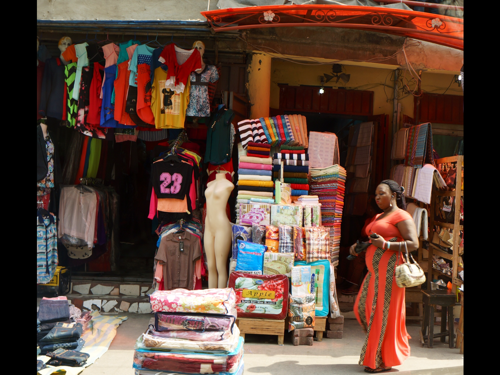
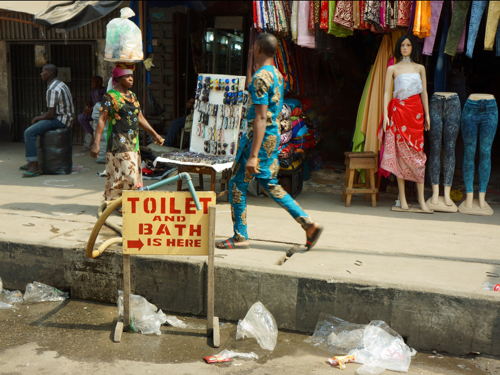
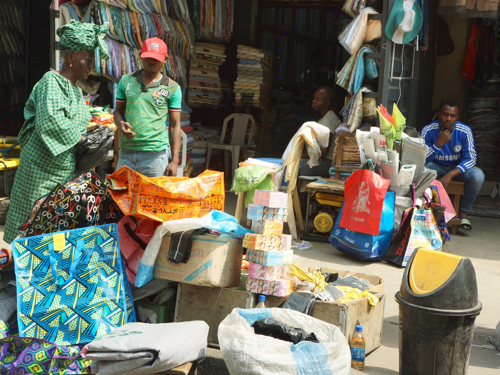
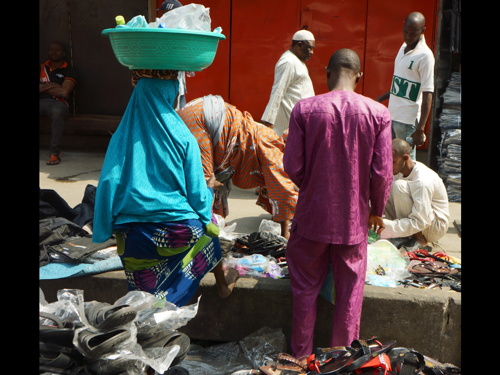 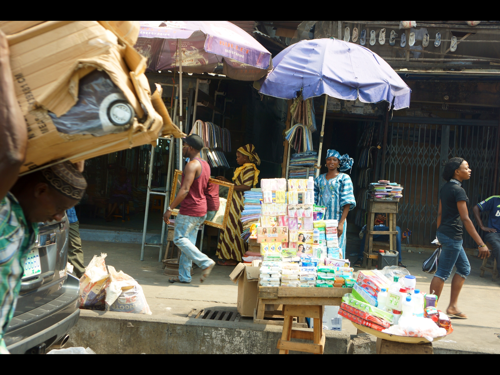 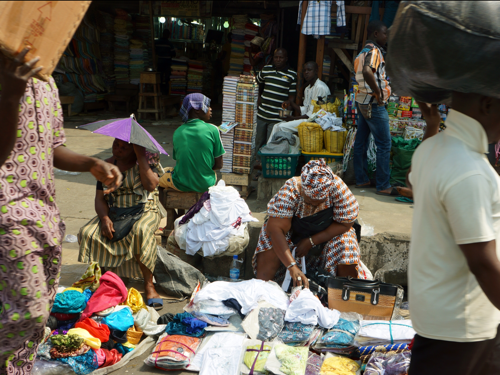 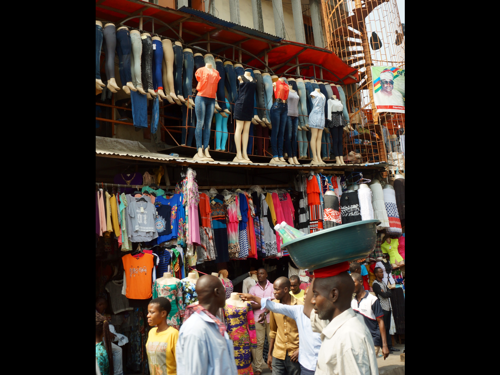
We next drove to the National Museum, a small, rather poorly lit and air conditioned building. It was, however, very well organized, with six rooms stretching from birth through reincarnation. The guide was well-versed on the artifacts and gave us a very interesting tour in just under an hour, explaining the traditions and beliefs behind the artifacts and costumes. Very well worth the stop.
We returned to the Blow Fish Hotel, a comfortable small hotel that is dominated by young wedding guests, with whom we chat freely. We go out by the pool to eat a quite delicious buffet lunch in the shade. After lunch, we rest in the room, then go back down by the pool for more conversation with bright young wedding guests from Africa and the US.
We and the Kipharts pass in the planned dinner, which probably won’t get going until at least 9PM, and instead walk to a modest African restaurant for an acceptable, but unexceptional, dinner. We return to the hotel where, if I’m successful in solving the problems I’ve been having with the blog, you’ll be able to read this post.
I am having trouble with the blog app, so I am trying to publish what is a draft of this post and hope to modify/finish this afterwards. If there’s a delay in future blogs, that is why. There may not be any photos.
January 2
Start the wedding day with buffet breakfast in hotel with Kipharts and Chase, delightful former roommate of Ayo (the groom at U of AZ) and now a high school history teacher in Seattle. Up to the room to dress for the wedding. This is a major project, which takes half an hour with a dresser to complete (for the women; guys do it all by themselves). My best guess, from the design of the male costume, is that Nigerian males do not pee. Here are a few photos from Carol’s dressing:
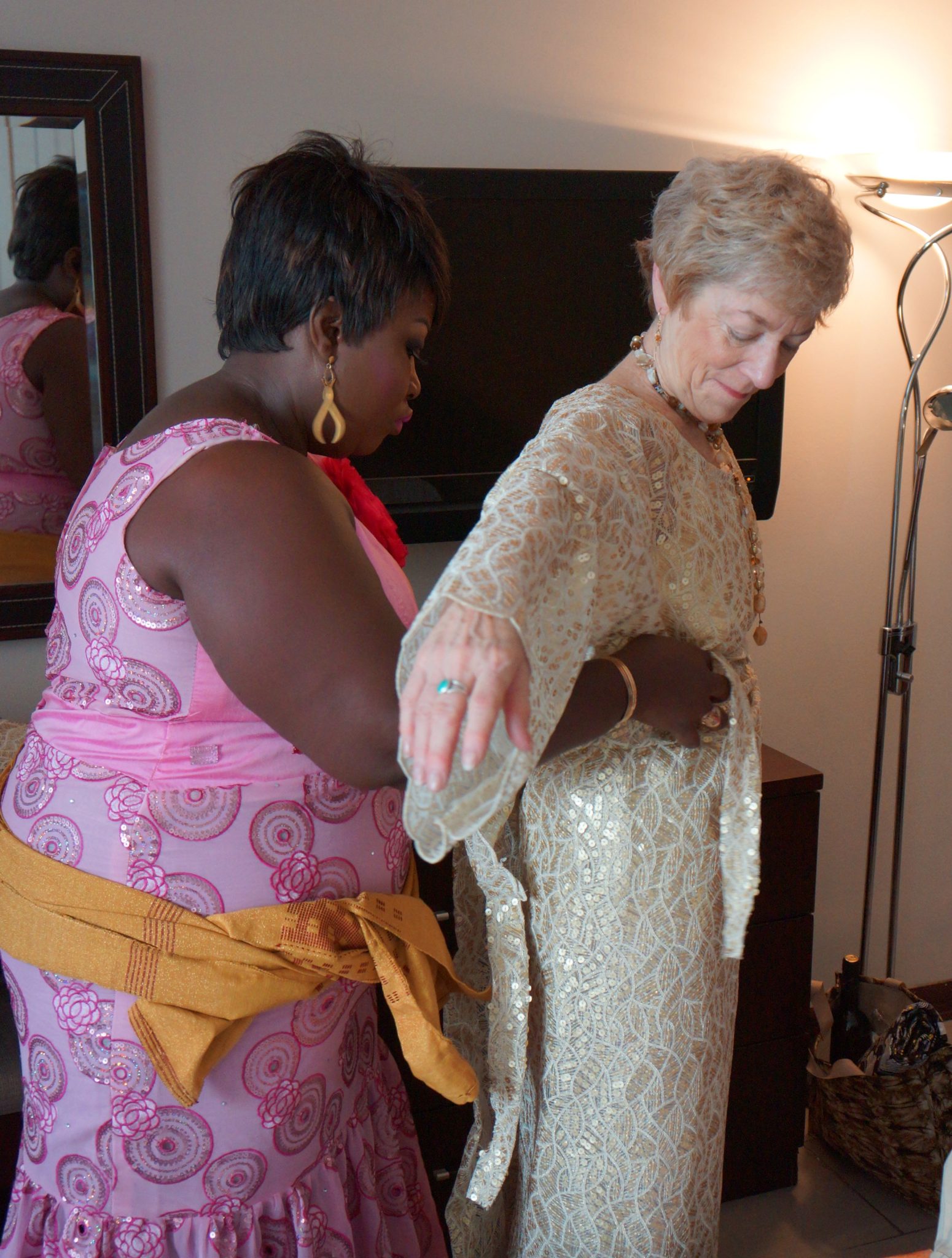
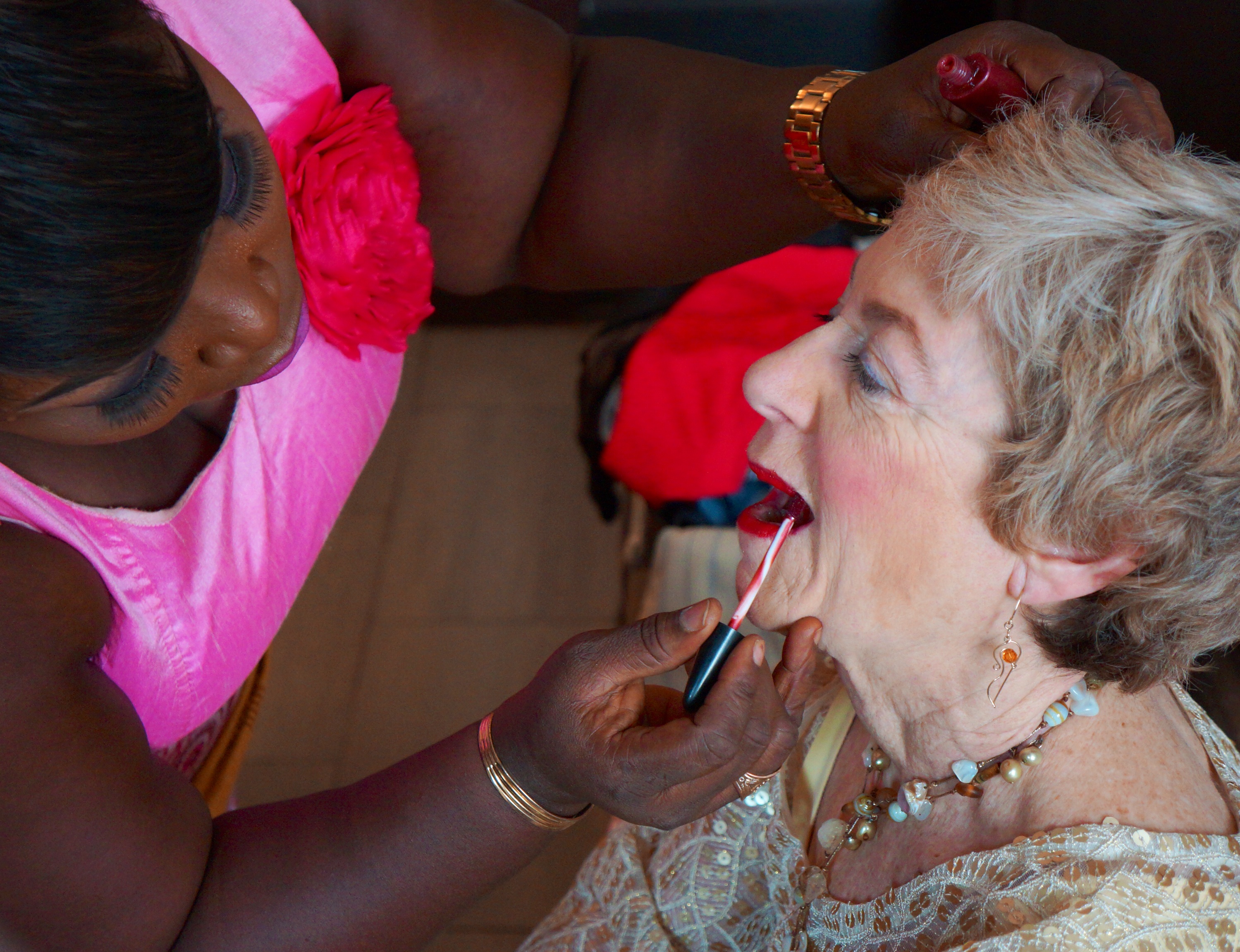
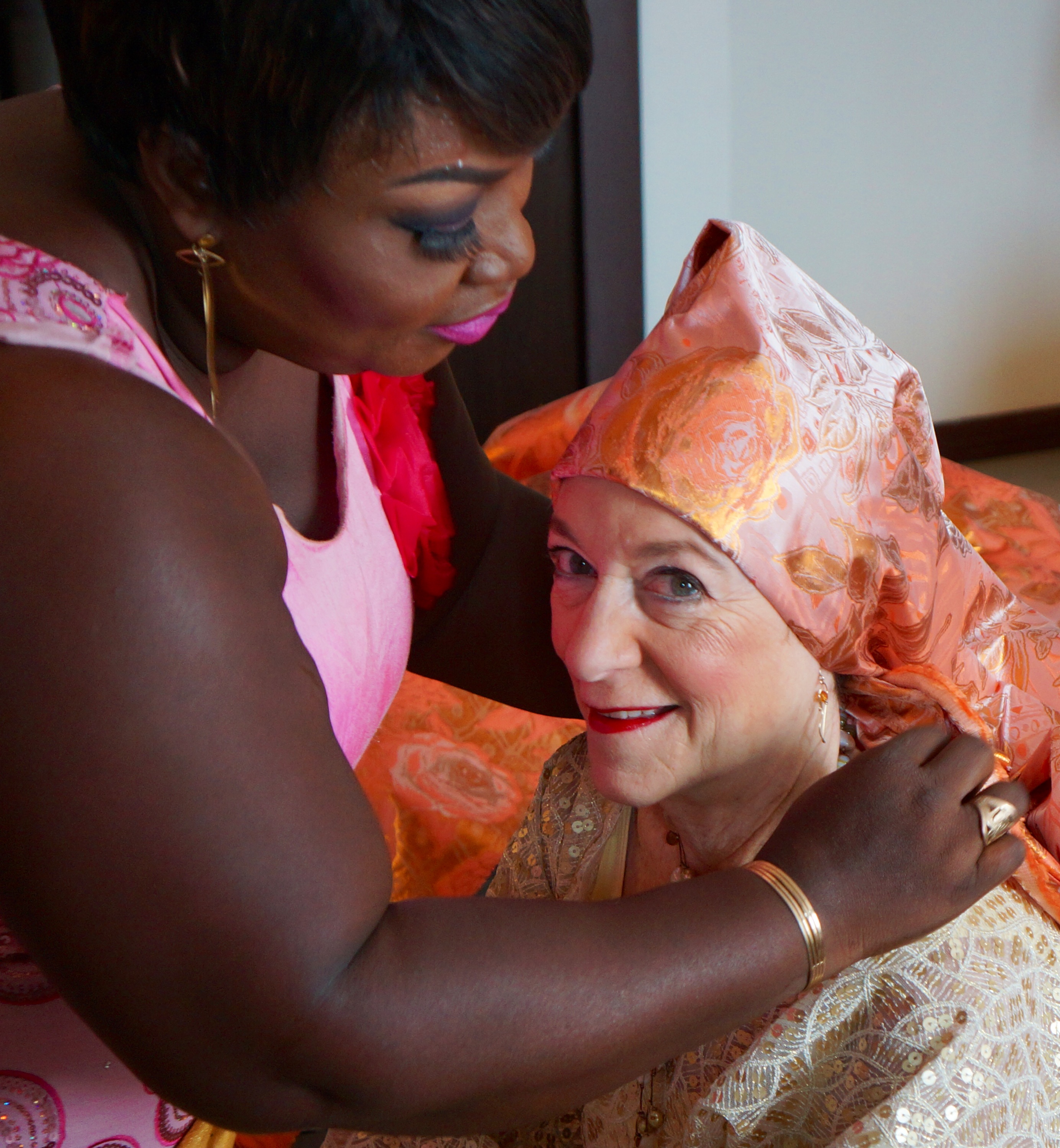
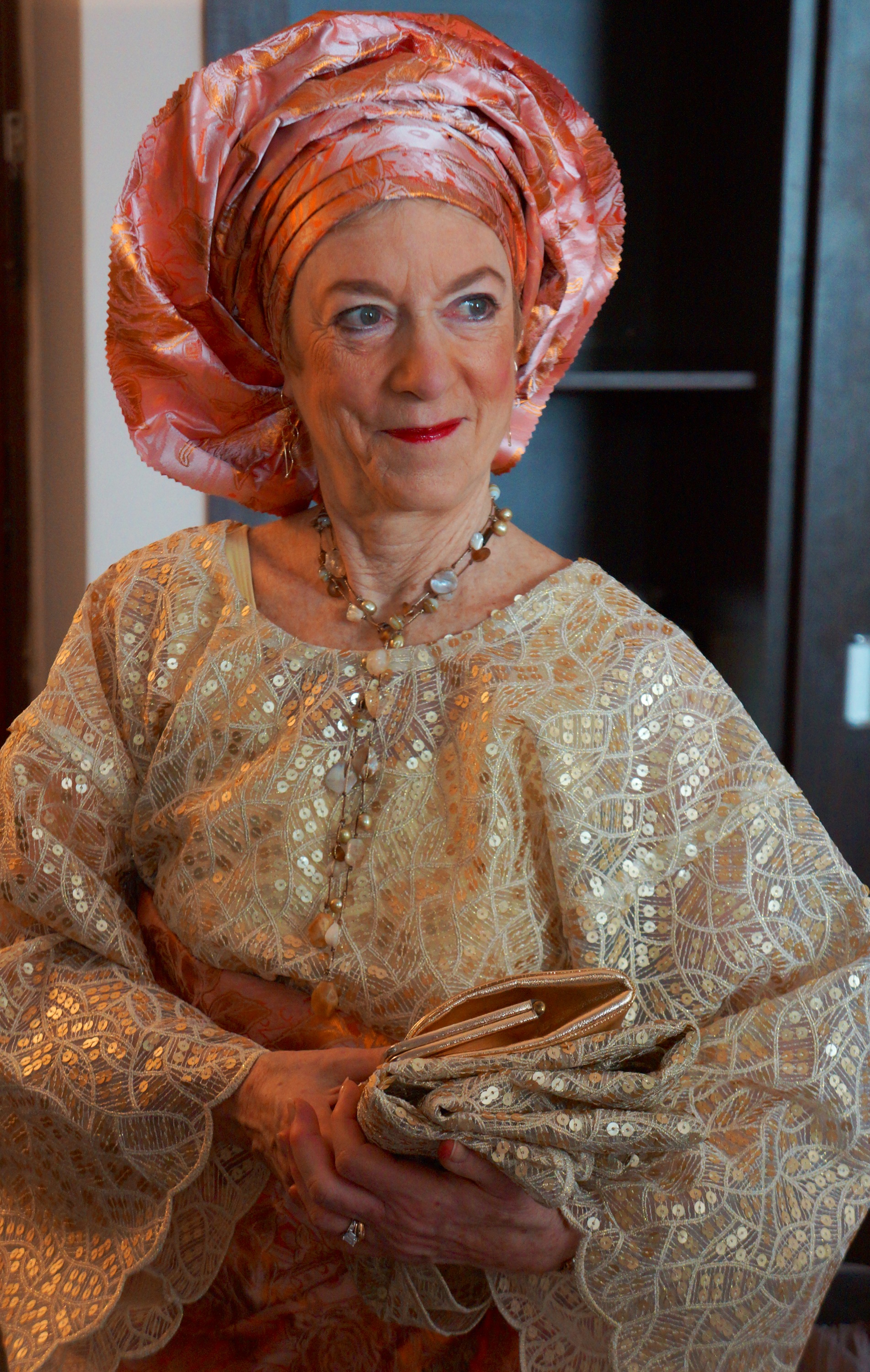
Best way to give you an overall view of the wedding ceremony is through this script of the proceedings:
FEYI & AYO’S ENGAGEMENT
PRODUTION SCRIPT
11.00am – 12.00pm: Arrival of bride’s family
The bride’s family is expected to be seated, waiting for the arrival of the groom’s family.
The Alaga ijoko is also expected to have arrived.
12.00pm – 12.10pm: Entrance of Groom’s family with choruses
The Groom’s family enters the hall with singing and dancing to the glory of God.
12.10pm – 12.15pm: Opening Hymn
After the Groom’s family has settled in, the Alaga ijoko would ask everyone to arise to sing the Opening Hymn.
12.15pm – 12.20pm: Opening Prayers
The opening prayers will be said by a representative of the bride’s family.
12.20pm – 12.35pm: Purpose of Gathering
The formal introduction of the groom’s family will be done by the Alaga Iduro stating where they are from and the purpose of their visit.
12.35pm – 12.50pm: Ushering in of the groom and his friends
The groom and his friends make an entrance amidst drumming and singing. He goes straight to the bride’s family to prostrate with his friends. While he prostrates, every member of the family is asked to stretch forth their hands and pray for him. He gets up and takes a photograph with the bride’s parents and goes ahead to do the same with his parents. He would then be ushered to his seat on the stage by his friends and takes a group photograph with them.
12.50pm – 1.10pm: Ushering in of the bride and her friends
The bride comes in dancing with her friends amidst fanfare. She goes to her parents, gets on her knees to appreciate them and they in turn pray for her. Still on her knees, every member of the family is asked to stretch forth their hands to pray for her. She then sits in between them to take a photograph. She goes ahead to do same with the groom’s parents; and they also in turn pray for her and welcome her into the family. She then goes to kneel before the groom and place his cap on his head and sits by him on the stage.
1.10pm – 1.35pm: Presentation of Proposal and Acceptance
After both letters have been exchanged, a younger sister of the bride goes ahead to read the letter presented by the groom’s family. The family of the bride then accepts the proposal letter.
1.35pm – 1.50pm: Introduction
A formal introduction is conducted. Both families are introduced and properly recognised.
1.50pm – 2.05pm: Engagement
The bride is asked to go to the gift arena and pick whatever she so desires. She picks a bible and shows everyone what has been picked. The groom goes ahead to present the engagement ring to the bride. Afterwards, the cake is cut and the first official meal of the couple is served.
2.05pm – 2.10pm: Special Prayer for the Couple
The couple kneel for their blessings. A special prayer is said by an elderly member of the family. After this, family, friends and well wishers are told to stretch forth their hands and say a word of prayer for the couple.
2.10pm – 2.15pm: Closing Hymn
2.15pm-2.20pm: Closing Prayers
While this gives you and idea of the order and scope, it does not begin to describe the pageantry and feast of sights and sounds. Unlike weddings we’ve experienced, this is decidedly a union, not simply between the bride and groom, but between the families. There is much drumming, processions of groomsmen, bridesmaids and finally the groom, and then the bride, prostration in front of the parents of the bride and groom, money doled out freely and openly to musicians, mothers of the bride and others. Here is perhaps a too-heavy dose of photos, featuring us, the Kipharts, Sola and Funmi, and the bride and groom (but you can flip through them quickly):

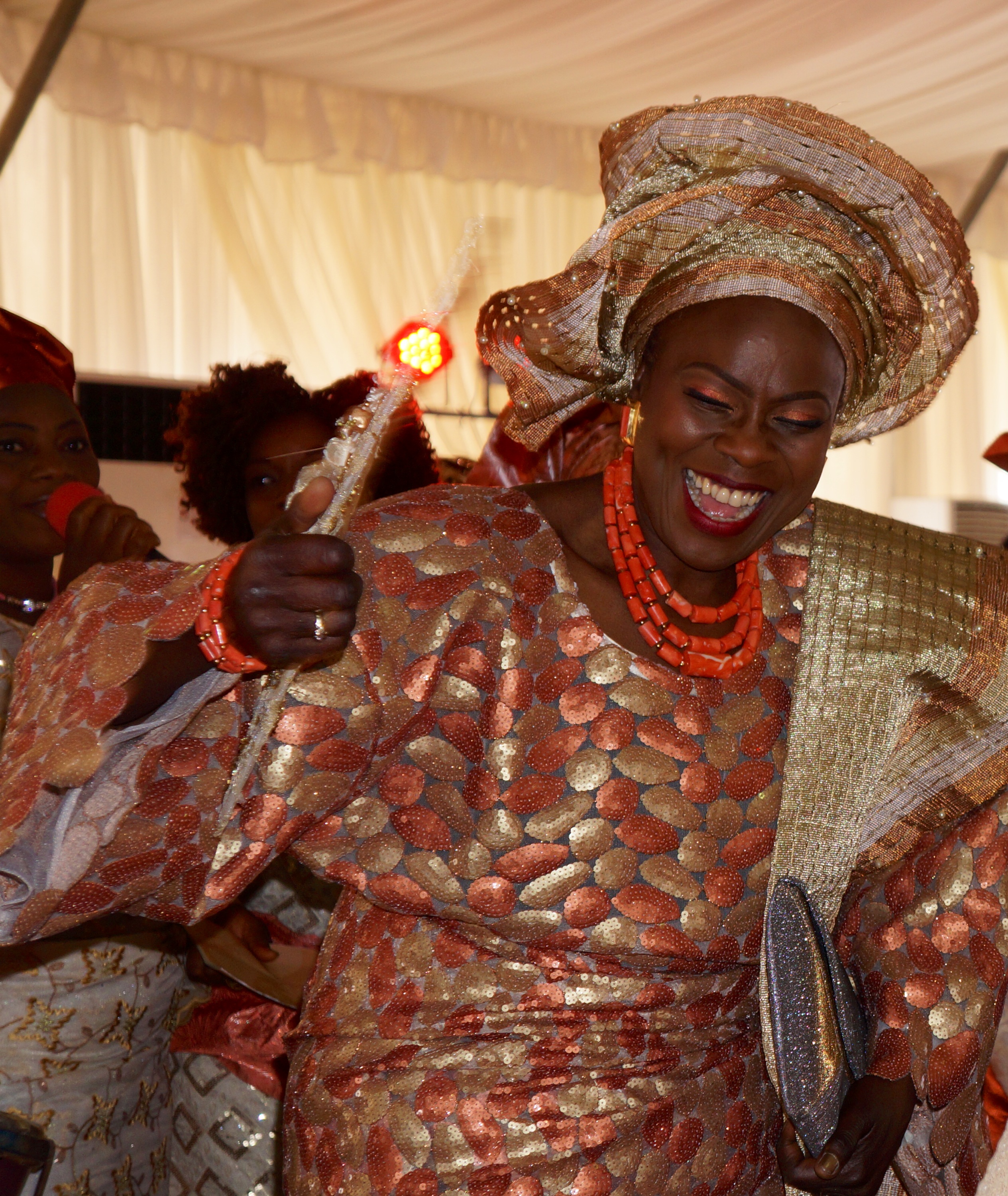
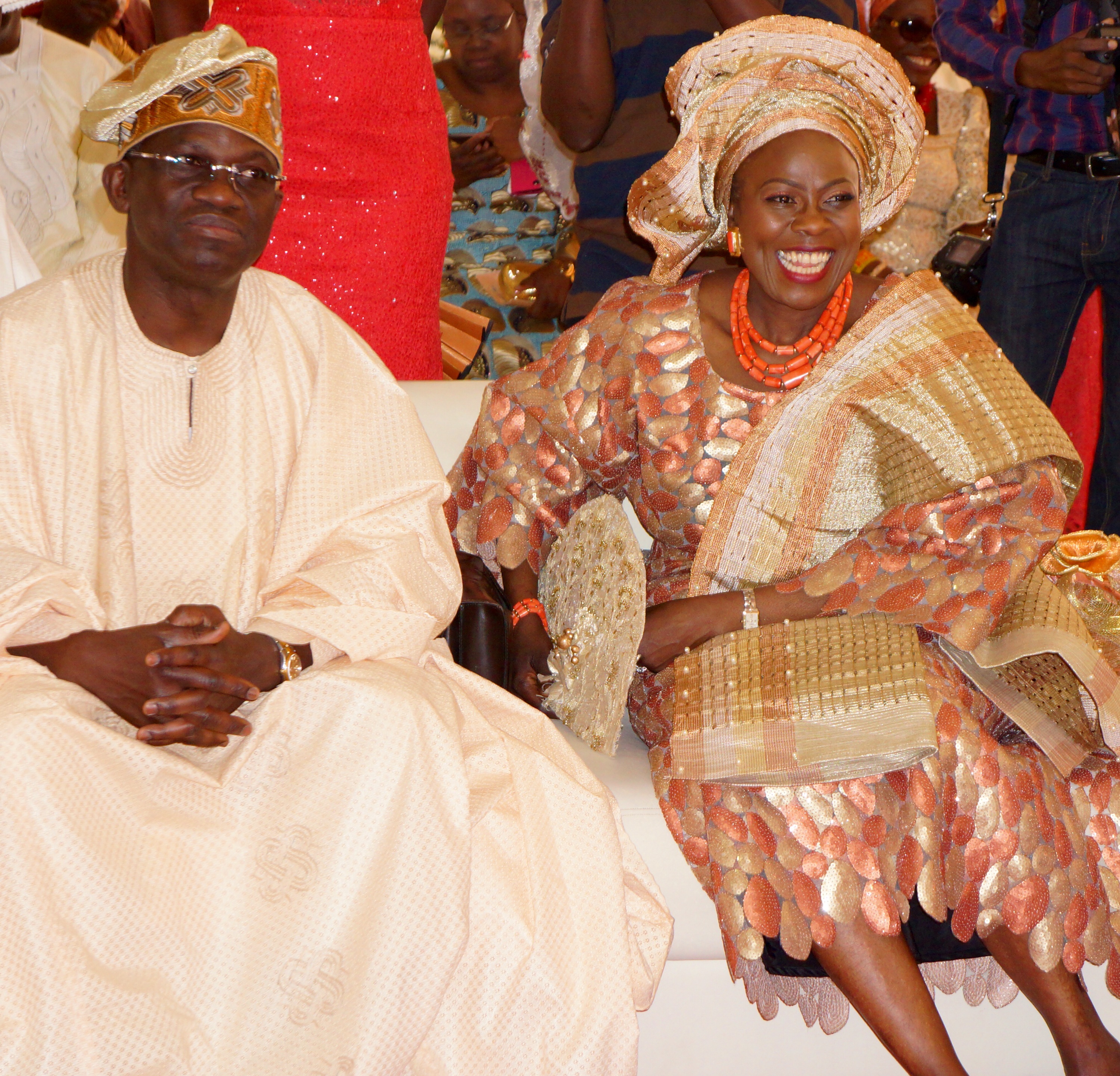
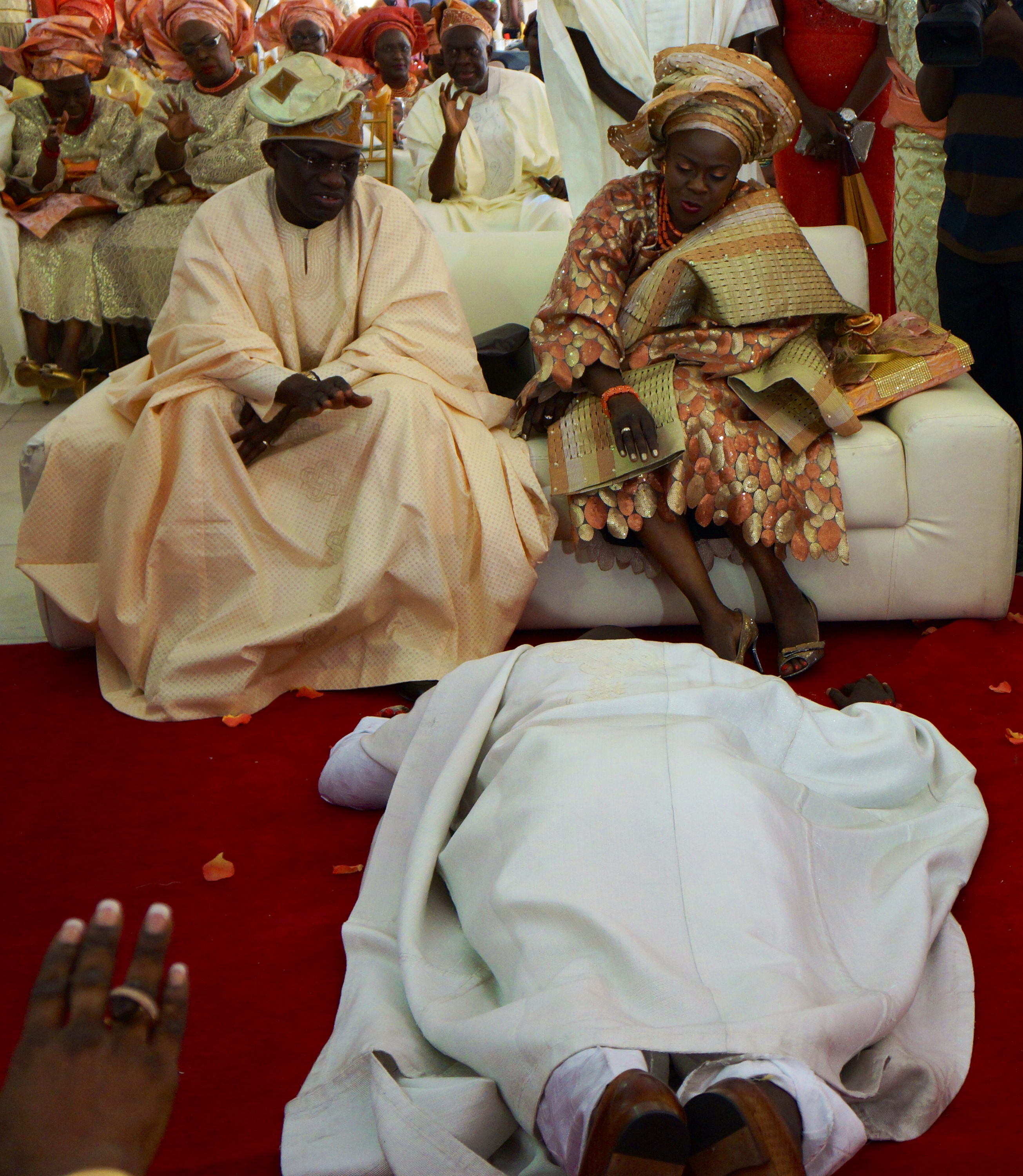
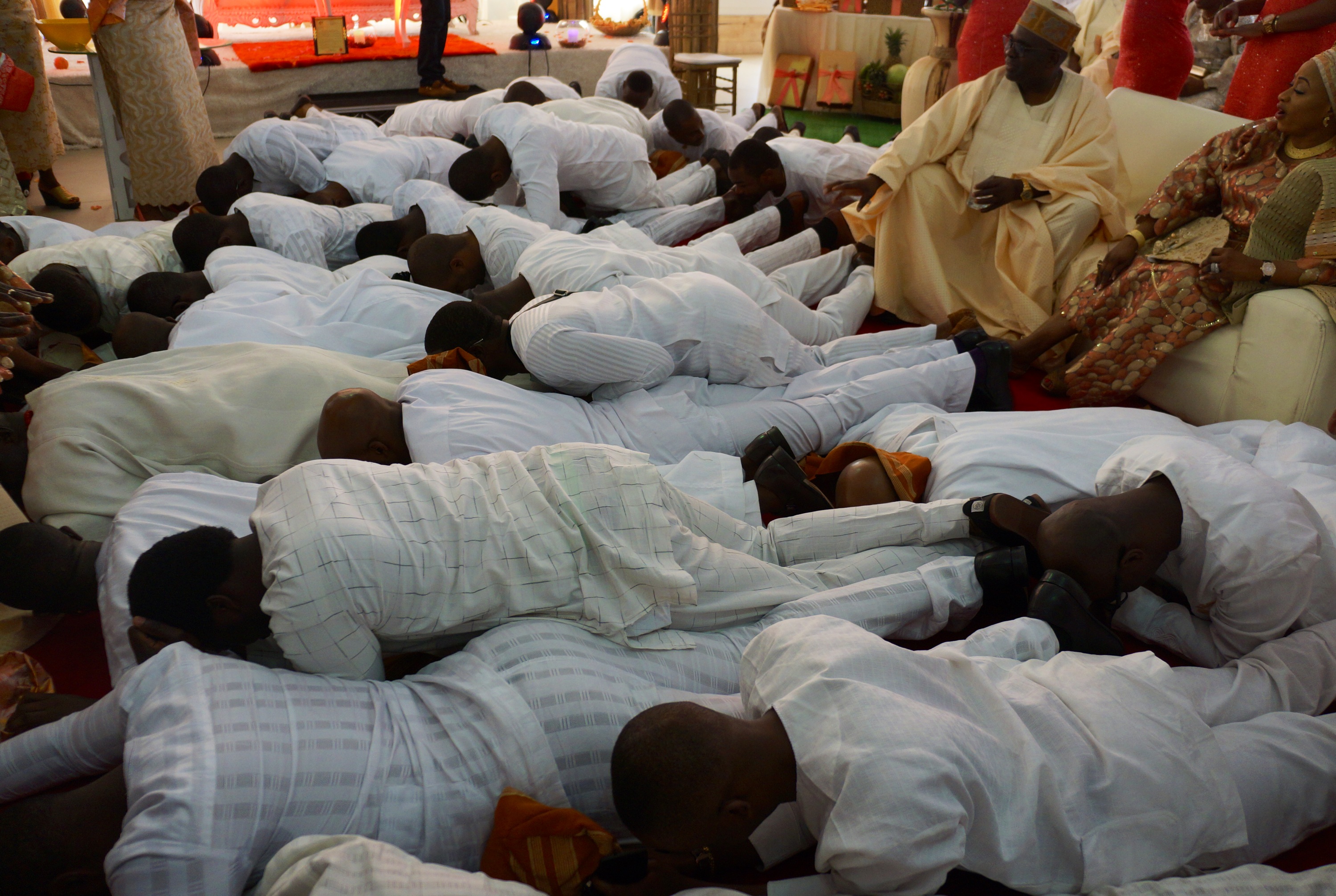
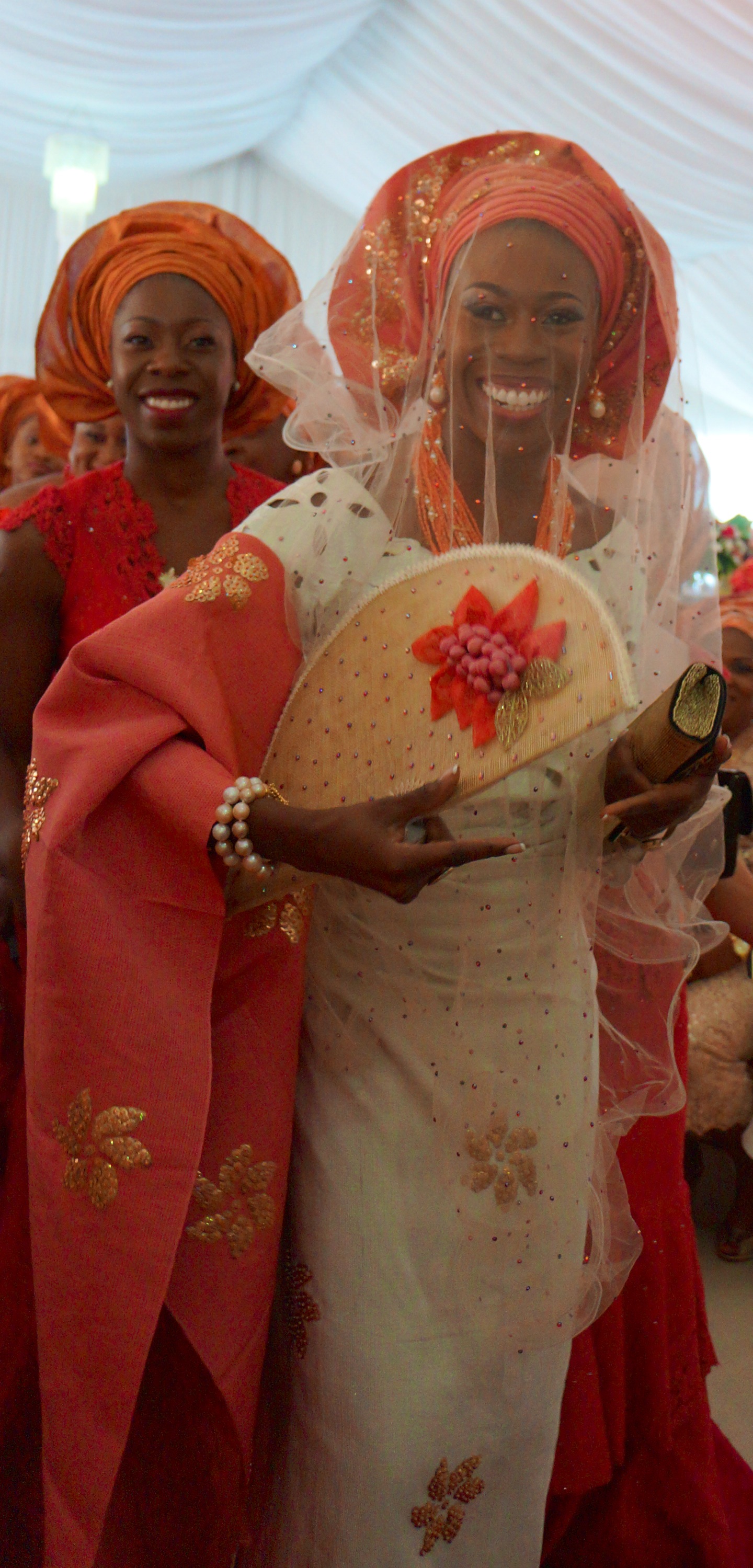

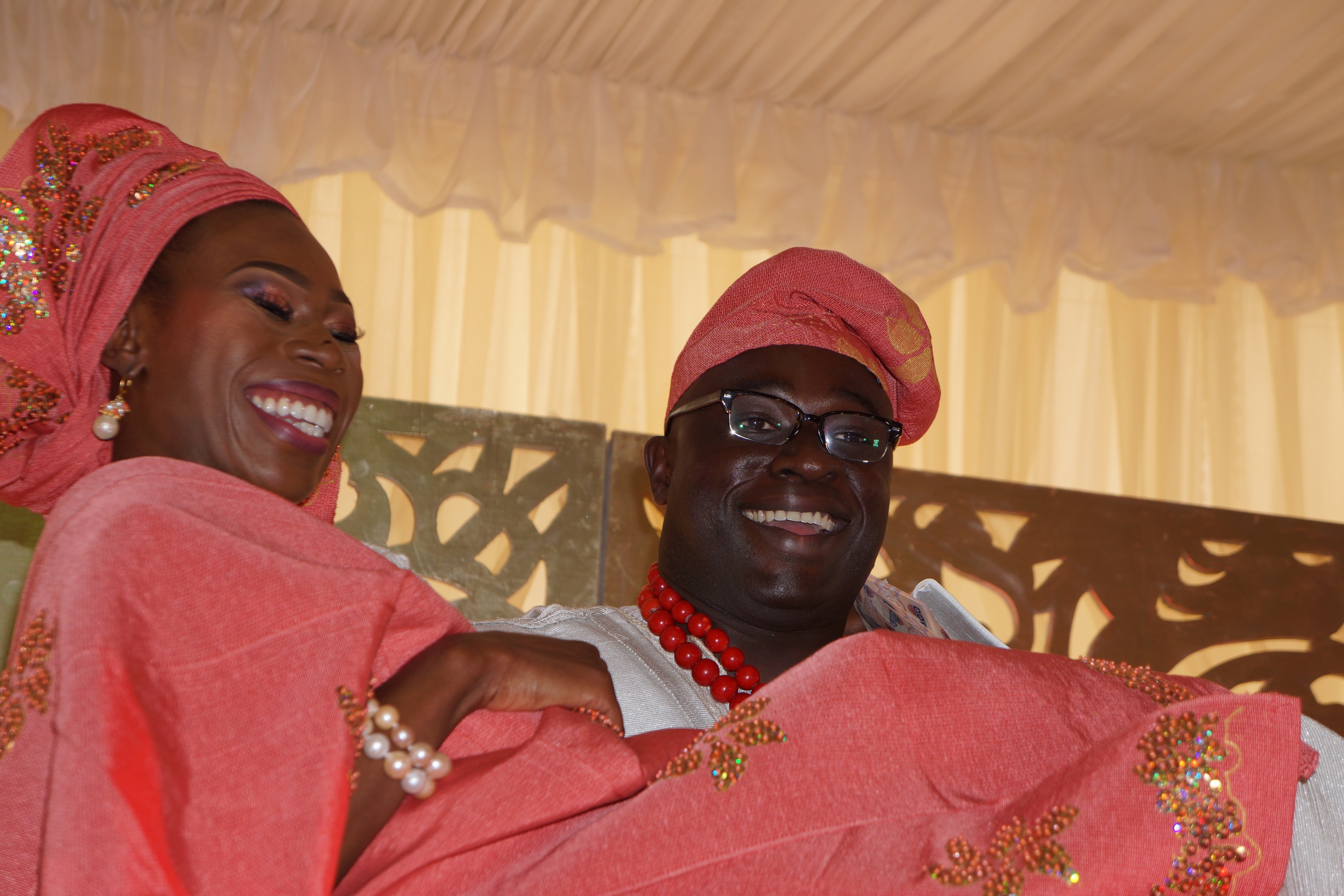


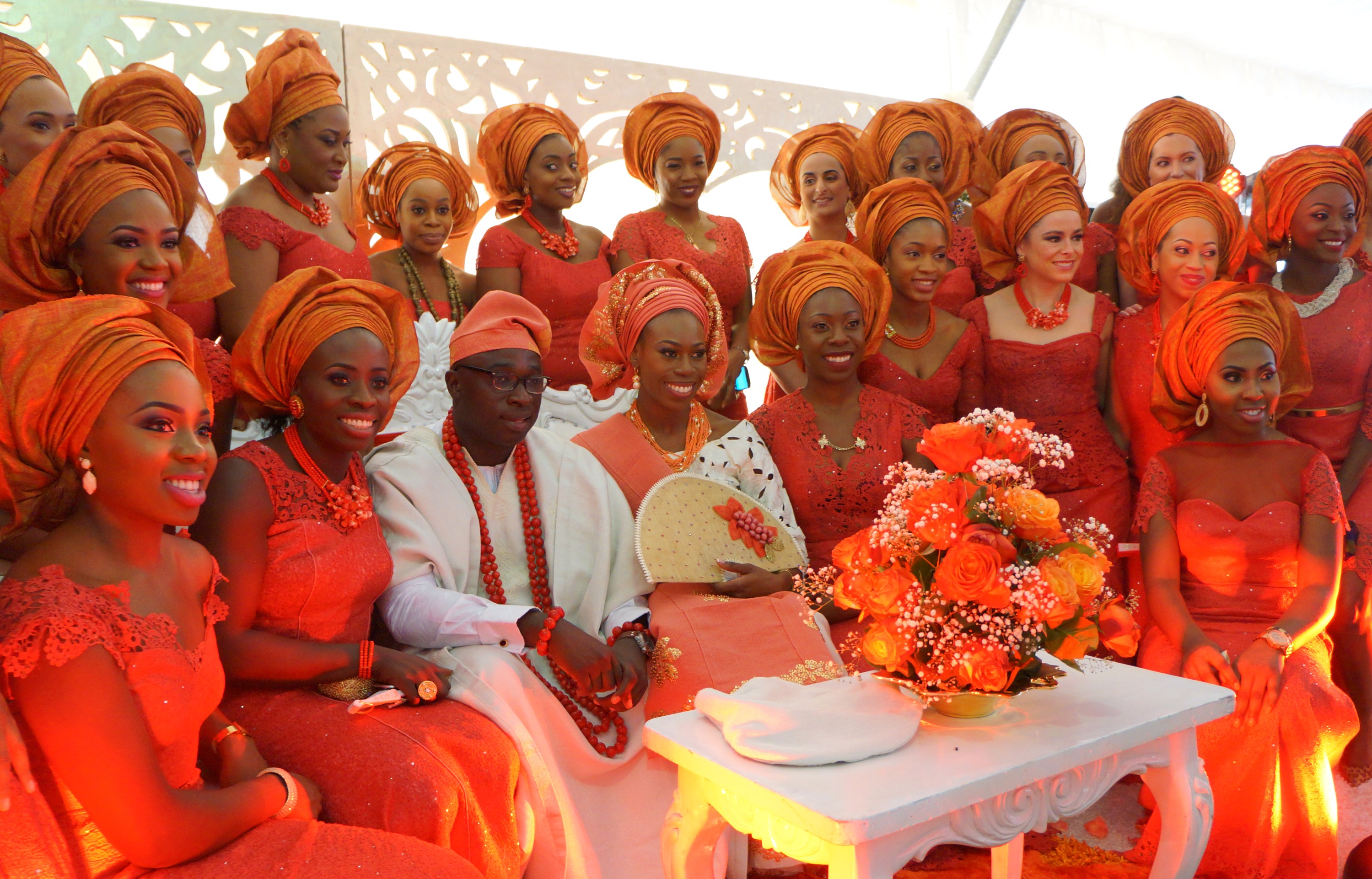
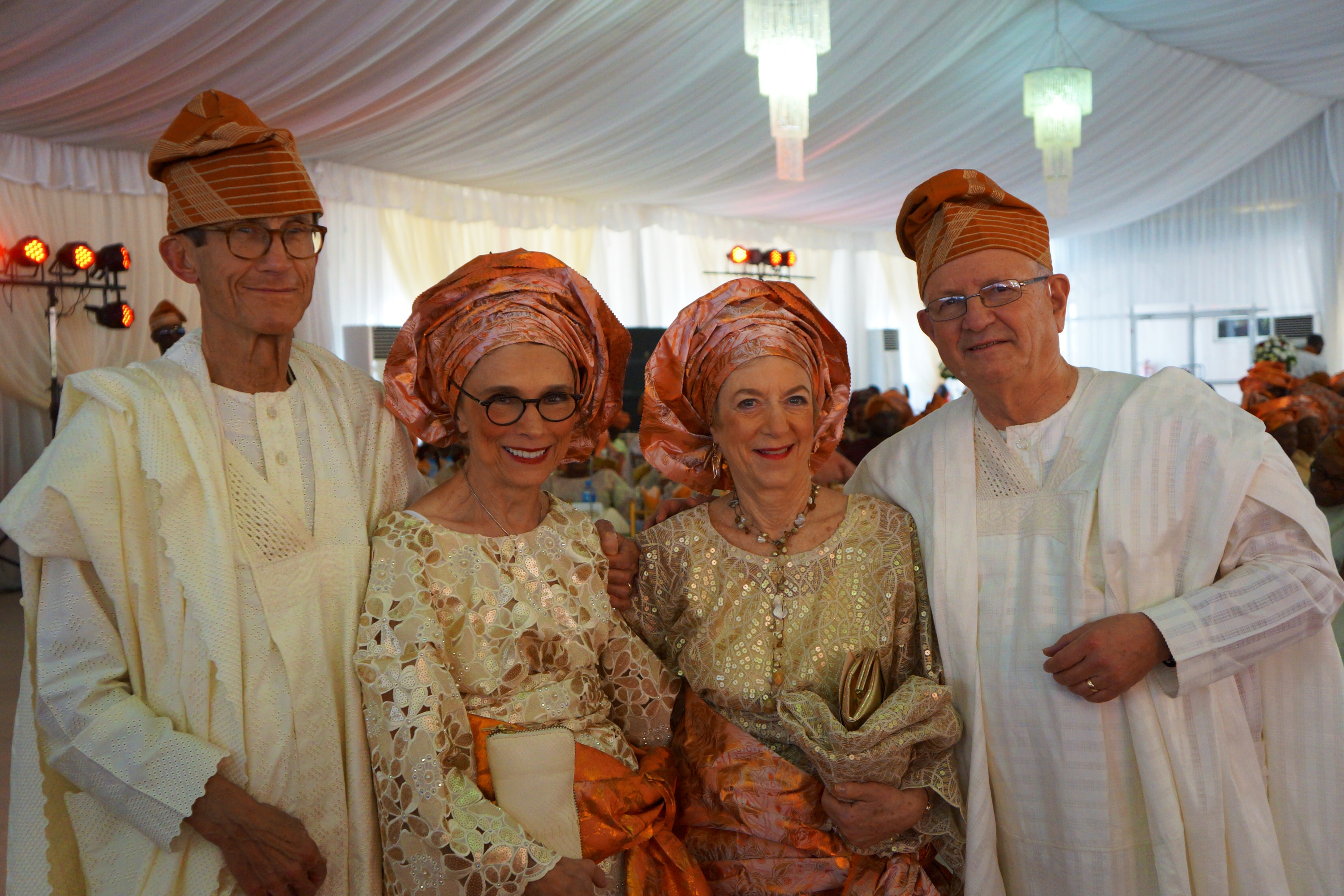
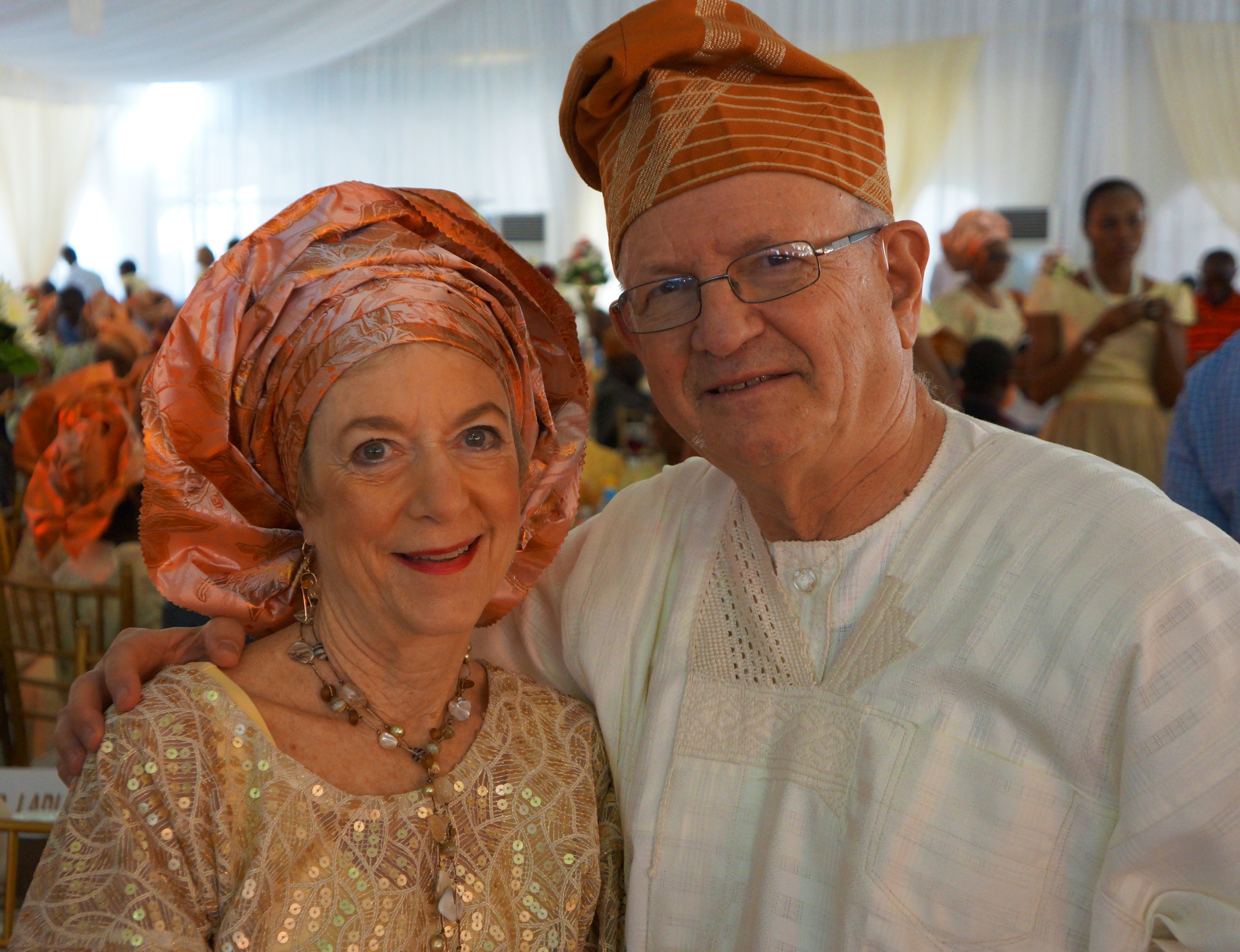

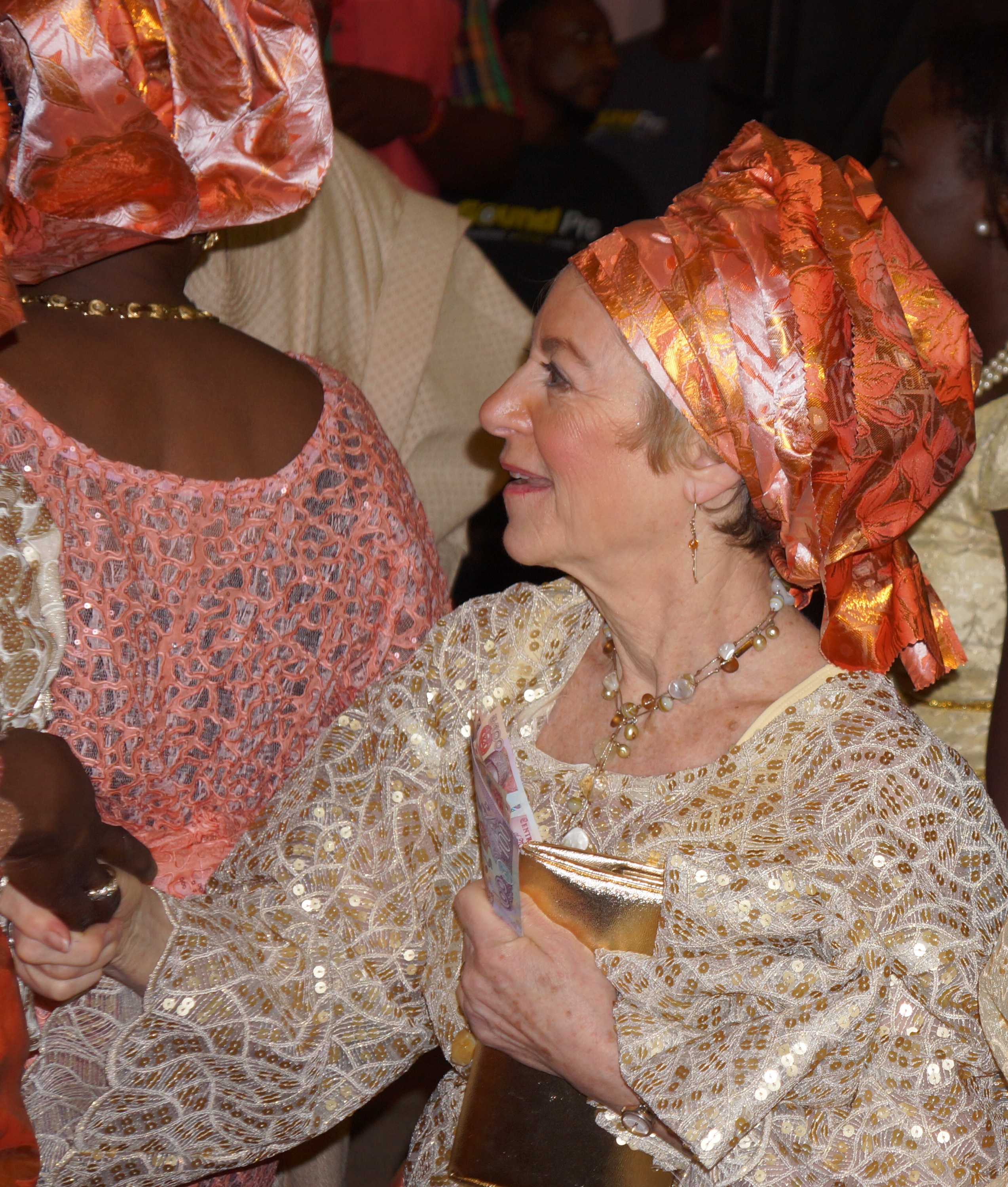
The costumes/dress of the guests and wedding party is fabulous–fine, colorful and rather spectacular.
The minute by minute schedule above is a bit misleading. For example, we were scheduled to leave for the wedding site, a convention hall rented for the occasion, promptly at 10 AM, fully dressed. Well, the dresser who as to help Carol dress and make her up arrived in our room at about 11:35. Needless to say, the bride’s party, of which we were a part, did not arrive between 11-12, more like 1:30. Probably nobody but us expected much different.
Once the festivities began, they proceeded pretty-much as planned, moved along expertly by a woman hired for the occasion as an MC. It is an elaborate performance, highly religious, with Jesus thanked profusely throughout for making everything possible. We are seated at the front, with family and (other) close friends. I’ve been freed by Sola and Funmi to push myself forward as I choose to take photos (“there is no protocol” they tell me.
Once the pageant begins, the food, drink and partying begins. A life band plays continuously (without break). For the two and a half hours we are there. It’s a totally joyous and wonderful affair, exceeding our extremely high expectations.
The party continues after we leave, though it probably not last much longer. Except that there is an “after party” for Feyi and Ayo’s friends in a separate facility at the center–and Jesus only knows how late that one will run. We and the Kipharts return to our hotel to relax and work on the blog (which just crashed, so you may or may not ever read this).
December 31, 2014-January 1, 2015
We are winging our way over the Atlantic, en route to Nigeria and Ghana. Our friends, the Kipharts, are with us, but in the front end of the plane. Our friends, the Olopades, are in Nigeria already and will meet us when we arrive. This is our fifth trip to Ghana with the Kipharts (our third with the Olopades joining us) and the second trip of the six of us together to Nigeria.
We were to have made this trip in late August – early September, but the Kiphart’s and we canceled because of the Ebola threat. The Olopades went. Being doctors, they had a role to play in Nigeria. In addition to our usual visits to remote rural areas, meetings with government and university officials and trips to medical facilities, we have a special reason for going to Nigeria right now. One of the Olopades’ daughters, Feyi, is being married tomorrow in Lagos, and we all will celebrate (along with about 400 invited guests and probably as many crashes). We are all very excited. The six of us will be dressed in our Nigerian wedding costumes, for which we were measured a couple of months ago in Chicago, by a Nigerian seamstress. How neat is that?
We’ll be well looked-after. Two days ago, we got an email from the bride with some travel tips. I thought you’d find it amusing, so I’m copying about half of it below:
Dear All,
Some of you have traveled to Nigeria. Others haven’t. Regardless – I wanted to share a few personal tips and tricks to help you better understand the epic journey you will all be embarking on, and provide you with a little tarmac humor 🙂
Step 1: Nigerians are very status conscious, and dress up for international travel. While it probably makes more sense to travel in sweatpants and comfy Uggs, this would be bewildering to most Nigerians. Make sure to bring a nice designer tote and something with a little bling. The Nigerian jewelry dress code consists of earrings, necklace and a watch. At a minimum. Comfy flats are acceptable if they have a little bling on them 🙂
Step 2: don’t bring too much hand luggage. Nigerians are notorious for bringing too much stuff back with them, so they are extra strict and will take your bags with you. No matter how tempted you are to be the last person to board, do not let this happen. Once the overhead space is full you are screwed. In the event that you do have to give up your carry on, make sure to carry a spare lock.
Step 3: have respect for elders. Older Nigerian people are revered and may have very strange expectations of you. The same for pregnant women or women with small children. They may ask you to do any of the following: carry their handbag, fetch things from the overhead bin, change the channel on the tv, unzip their coat, etc. Do not be alarmed. Comply, smile, and move on. The only thing I’d put my foot down for is when someone asks you for your aisle seat when they clearly have a middle one.
I’m hoping that older, non-Nigerians are revered, too. One can never get too much reverence.
For those of you who can use a little brush-up on the map of Nigeria, here it is:
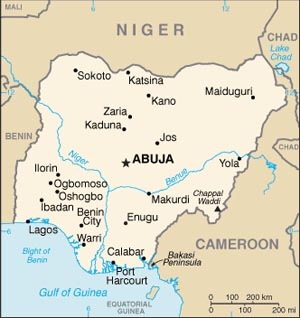
The awful things that are going on with the Boko Haram kidnappings and killings are in the far north of the country, a long way from where we’ll be. Ghana is not shown on this map, but it’s west of Benin.
To give you the big picture on Nigeria, we were struck by how it bestrides sub-Saharan Africa as a kind of colossus. The population of Lagos alone is two-thirds the population of the entire country of Ghana. In a sense, Nigeria is three countries, the Ibo-dominated, oil rich Southeast (which seceded as Biafra in the 1960s, resulting in a 30-month civil war that killed more than a million), the Yoruba West of the Country that includes Lagos, the country’s engine, and the Hausa North, which is largely Muslim, agrarian and military. These countries have different languages and cultures. There were originally twelve states in the three regions, but those twelve have now morphed into thirty-six, each with a government, and each (except Lagos) largely dependent on an oil-rich federal government for funds. Small wonder, then, that corruption is a big problem.
Funmi and Sola Olopade are both Yorubas, and proud of it. Funmi’s father was an Anglican minister and Sola’s a businessman. Both were highly educated in the best and most competitive schools in Nigeria. The Olopades are both doctors, and run the Global Health Initiative at the University of Chicago. If you want to know something about Funmi, I encourage you to take a look at http://www.the-scientist.com/?articles.view/articleNo/36681/title/Cancer-Knows-No-Borders/. Sola is equally accomplished, but does not have as good a press agent as Funmi.
The Olopades are both dual citizens. It’s important for us to keep in mind that in dealing with Funmi and Sola, we are talking to the upper strata of Nigerian society and not to think that they are representative of the population as a whole. I’ll fill in more about the Olopades as we go though Nigeria together.
Prior to our last trip to Nigeria, I wrote a fair amount about Nigeria, which you can find in my earlier blog, if you are interested. For those of you who are too lazy or not interested enough to look back (and I mean “lazy” and “not interested” in their non-pejorative sense) or want to focus on what’s key, I’ll repeat Sola’s answers to three questions I put to him before our last trip.
What five things should readers of the blog understand about Nigeria?
Nigeria is a multi-ethnic country and a relatively young democracy despite getting independence in 1960
Nigeria is a major oil producer and probably provides 25% of US oil import of light crude
Nigeria is the most populous country in Africa with an estimate of 1 in 3 to 1 in 4 black persons in the world being a Nigerian
Nigerians value education and are the most educated in terms of masters level degrees earned by all immigrants in the USA
Moslems and Christians are about 50/50 in terms of numbers with the north being predominantly Moslems and the southwest being a mixture
2. What are Nigeria’s greatest strengths/assets?
The people, not only in terms of numbers but in terms of generosity, especially the Yorubas, who are sometimes captioned as “as hospitable as the Yorubas”
Natural resources beyond oil, which is what most people know
Entrepreneurship
Confident and very assertive educated folks
Large families that provide safety net for those going through life’s challenges
3. What are Nigeria’s greatest problems/challenges?
Corruption
Sole dependence on oil
Unreliable power (electrical) supply
Poor leadership
So, it just turned midnight. Well, actually, it’s a bit of a metaphysical question when midnight is/was. It’s midnight Houston time, but we’ve been flying east for a few hours, so it must actually been later than that. Why Houston time? We flew to Houston, where we got a non-stop to Lagos. Why are there non-stops from Houston to Lagos? Oil.
Thus far the trip has been a breeze. There seemed to be more check-in people than passengers in the premier check-in lines at O’Hare and, since we’re TSA approved, we flew through security. We spent a couple hours visiting with the Kipharts in the United Club in Chicago and at least as long with them in the Club in Houston. Carol and I are flying Economy Plus, which is good enough. I’ve been reading AMERICANAH by
Chimamanda Ngozi Adichie, which is excellent, and the perfect book to be reading en route from the U.S. to Nigeria to attend the wedding of a Nigerian-American. The long flight to Lagos (over 11 hours) will allow me to make a heavy dent into the book.
Flight over on United’s quiet new Dreamliner arrived ah hour early. Customs was smooth, but rather long wait for luggage. We were met at the airport by Sola and two drivers and escorted to the Blowfish Hotel on very upscale Victoria Island. Light traffic on New Year’s Day holiday. Checked into hotel and our wedding costumes were folded on the bed.
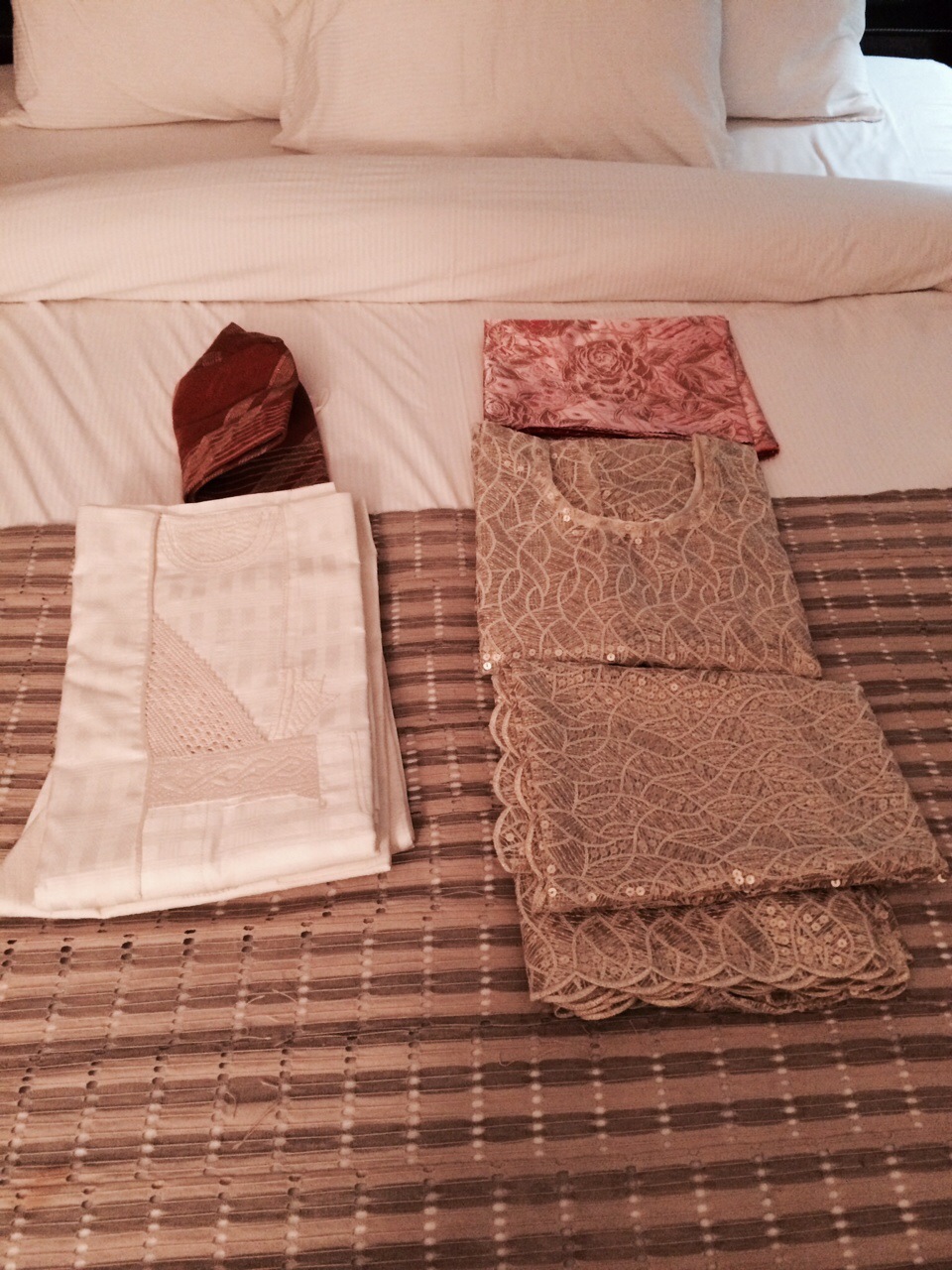
Walked half a block to what turned out to be a terrific Japanese restaurant. Funmi and Sola walked us over, but did not stay. The Kipharts and we had dinner with Yemi, who was an advisor to Funmi in college and a great character.
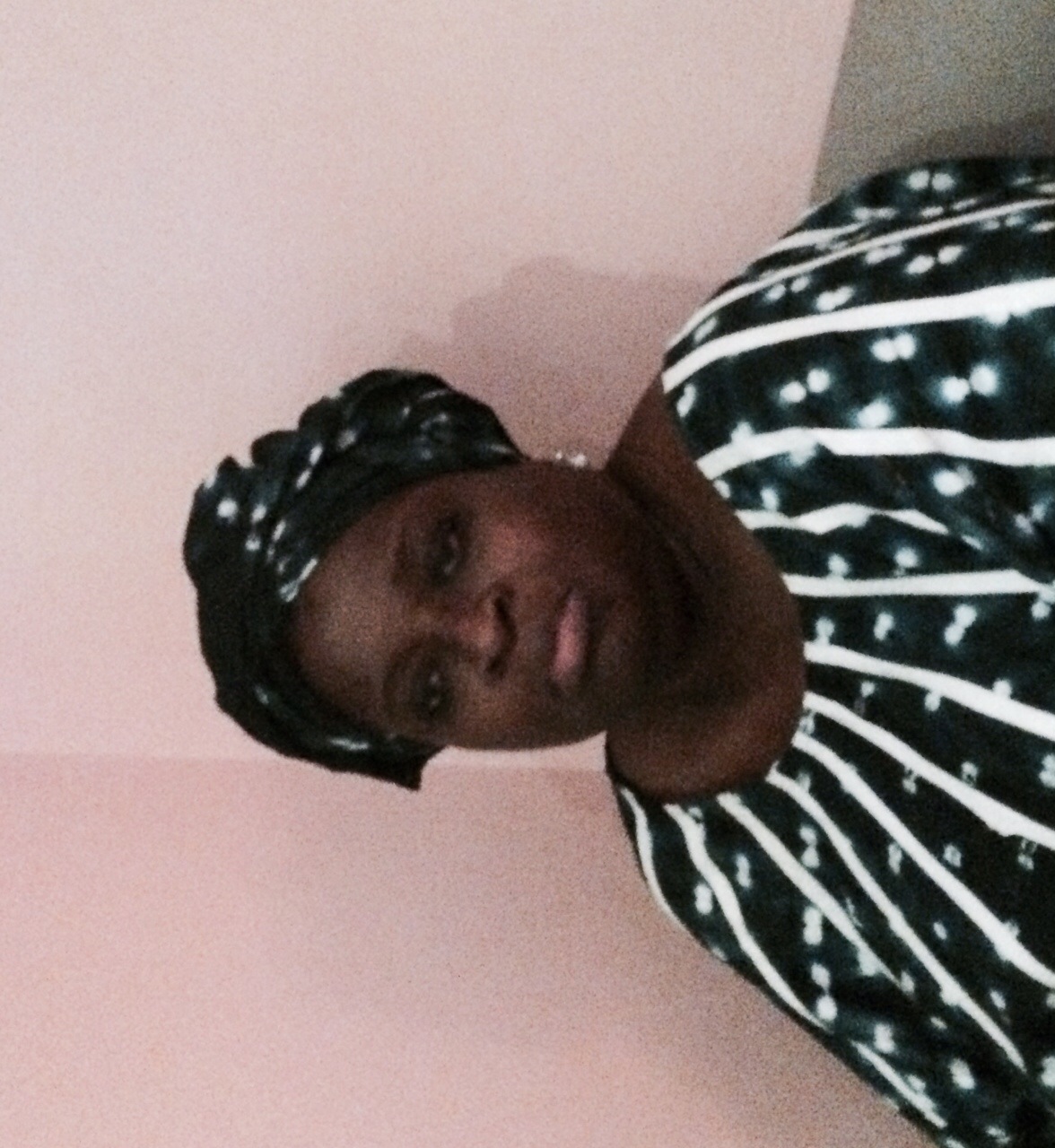
She lives in England, where she used to work in HR for a large foundation that served people with disabilities. In more recent years, she’s moved to Essex, where she volunteers and conducts focus groups for people with cancer and their families. She returns to Nigeria four times a year to fulfill her responsibilities as chief of a group of some 3000. She also travels to Kuwait to visit her son, who is in finance there and his wife and daughter. Yemi was a most entertaining dinner companion.
We returned to the hotel, where we will retire very early in the hopes of being wide awake for tomorrow’s big wedding day.
May 7-8
Breakfast and last chance to photograph the toucans and macaws at the lodge.
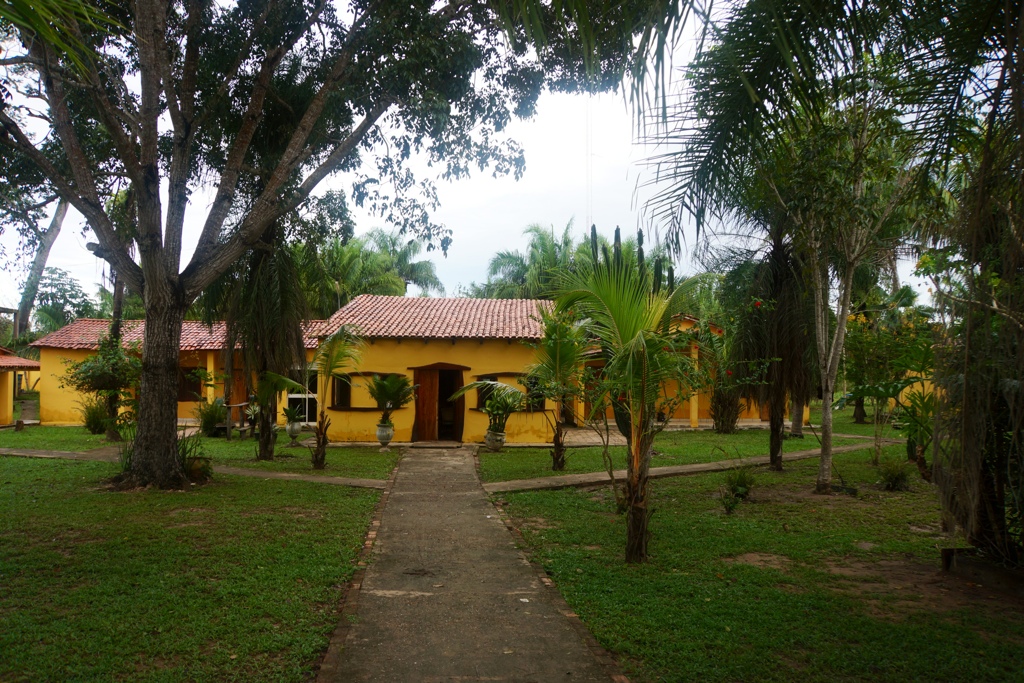
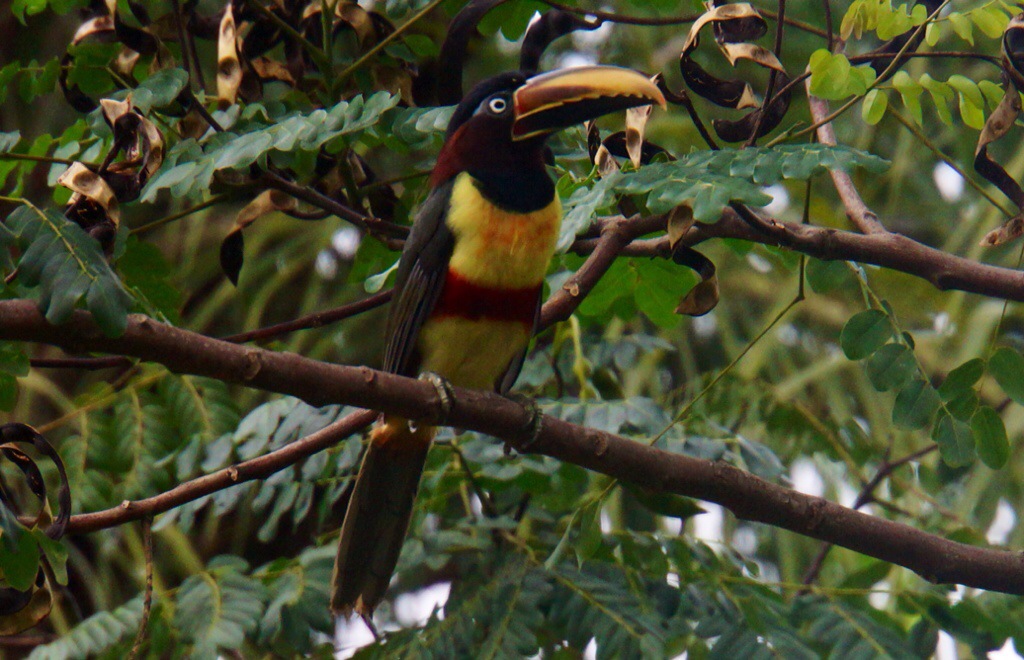
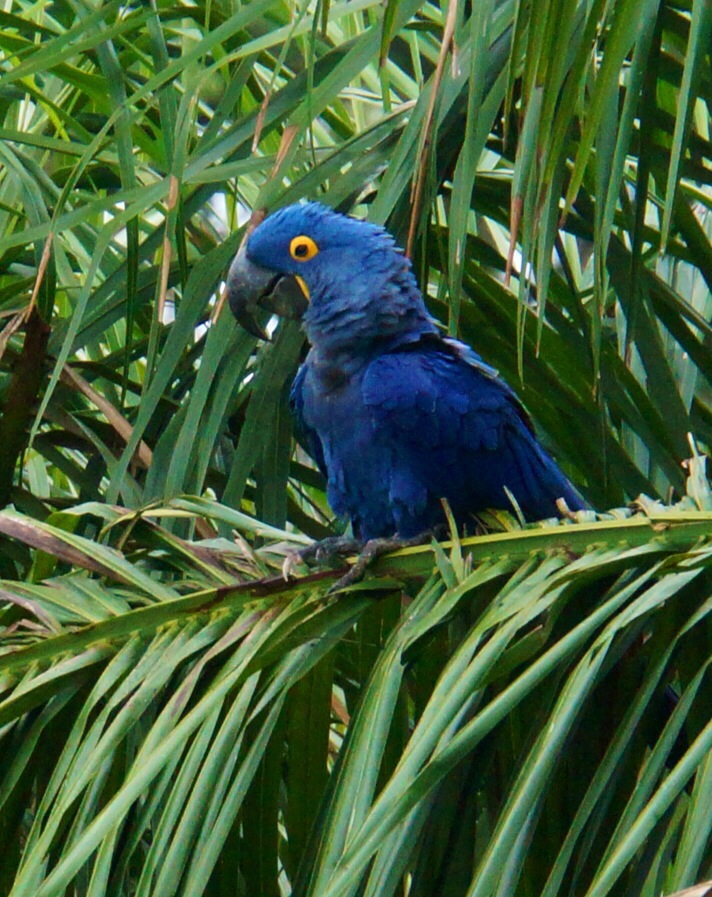
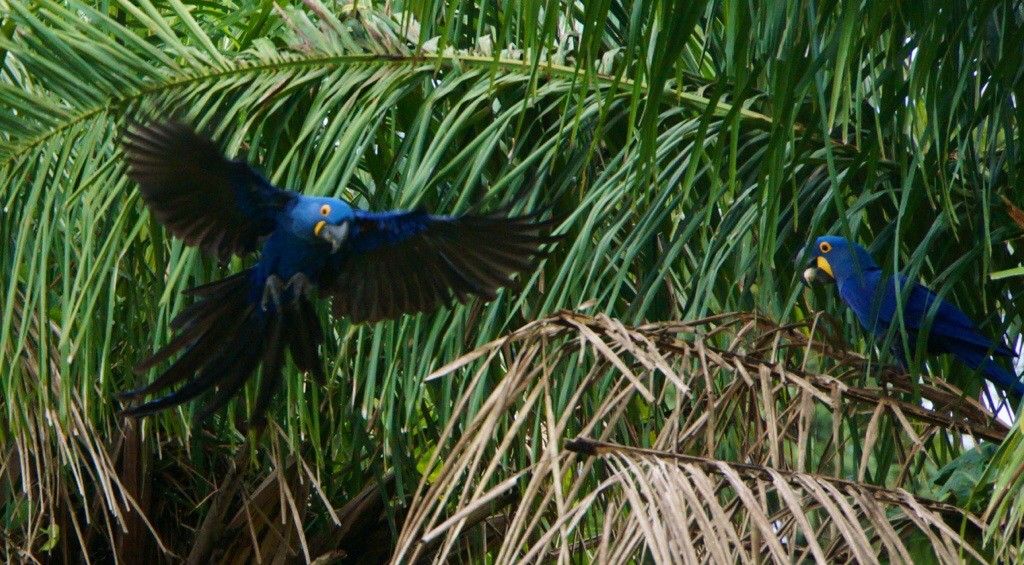
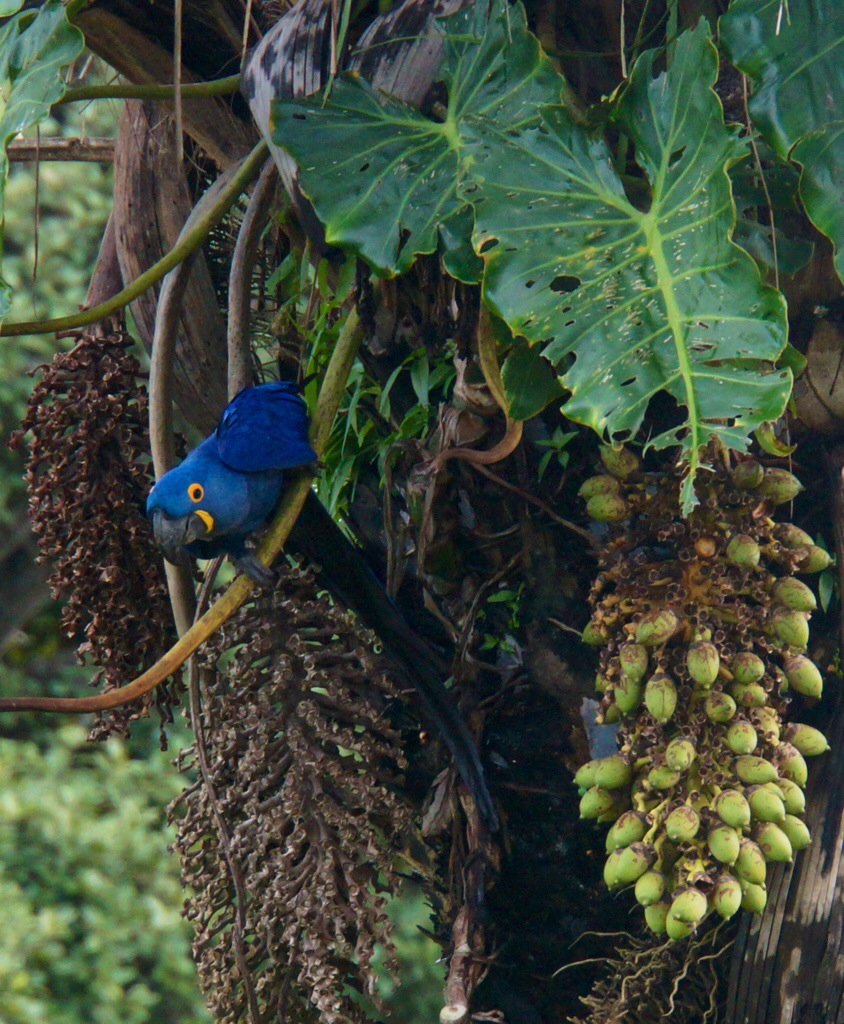
We set out for the long drive to the Cuiaba airport at 7:30. Eduardo treats the drive as just another birding outing, so we stop frequently to view and photograph birds, and even some small marmoset monkeys that Eduardo has heard, then spotted as he drives down the muddy and slippery “highway.”
The heavy rains have done no favors to the condition of the road, and Eduardo sometimes makes some bridge repairs before crossing, but the scenery remains pleasing.
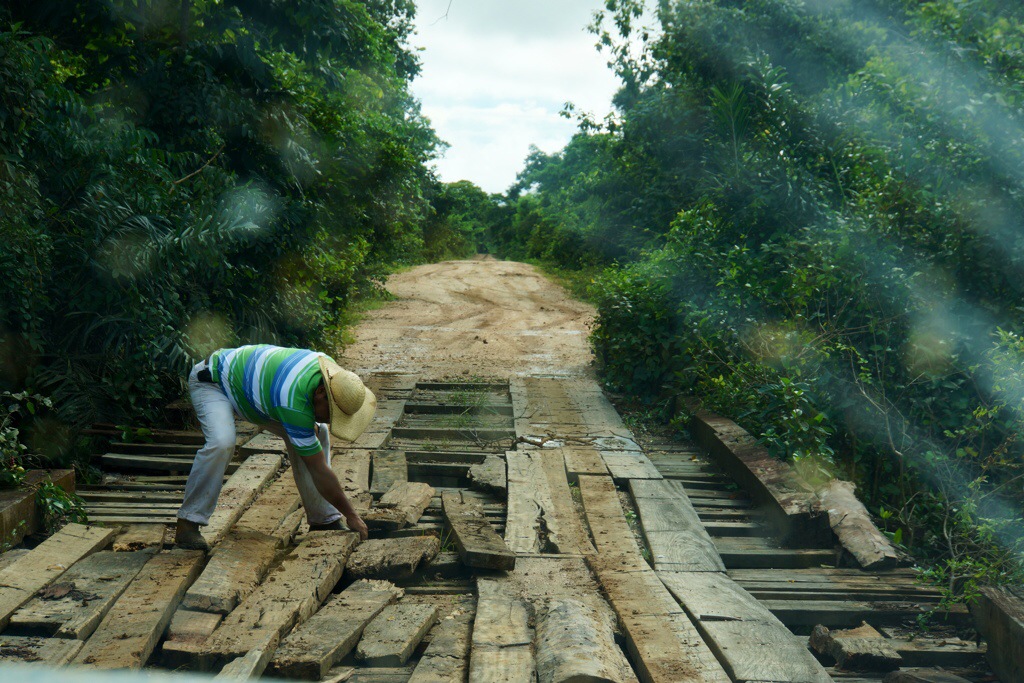
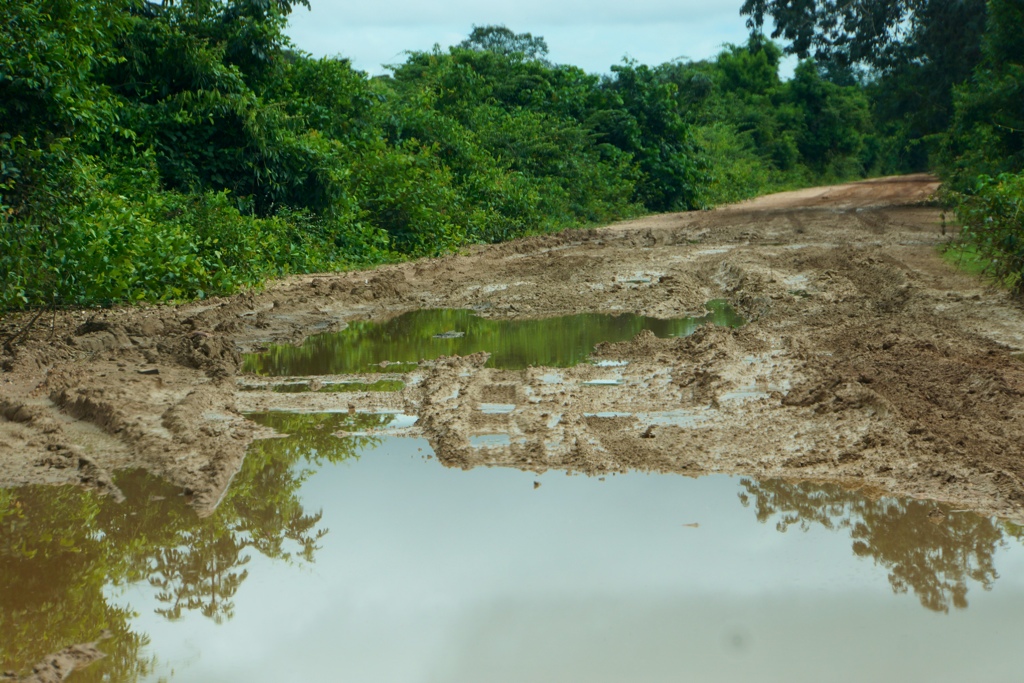
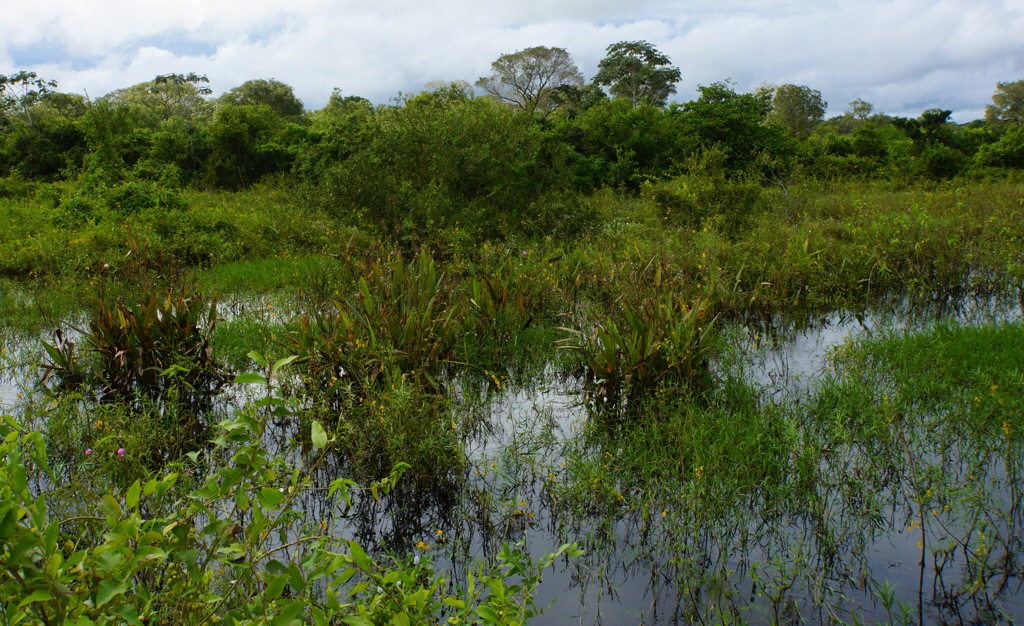
Eduardo’s facility in spotting and identifying birds and other animals brings to mind the skills that our guides in Africa impressed us with many years ago. In both cases, it’s a familiarity borne of growing up and living with the animals, not from book learning. Eduardo says that the human population of the Pantanal (the jungle, he calls it, is 200 males). No crops are grown because the soil is too sandy, and work consists of raising cattle, being a cowboy –raising horses for tending the cows–fishing or ecotourism.
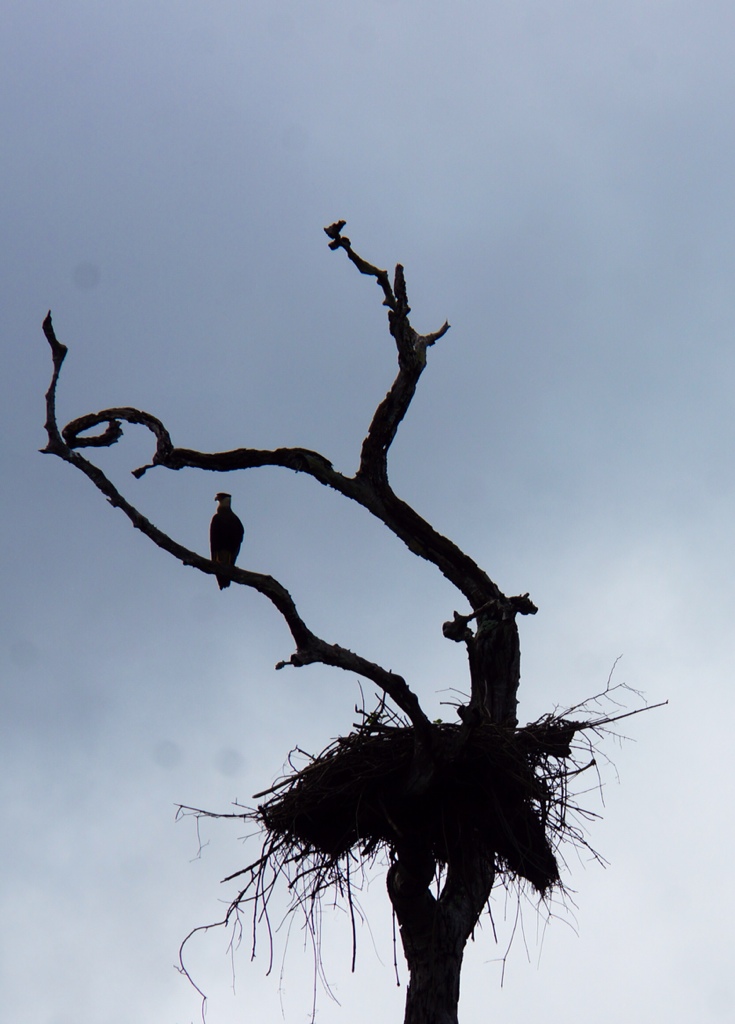
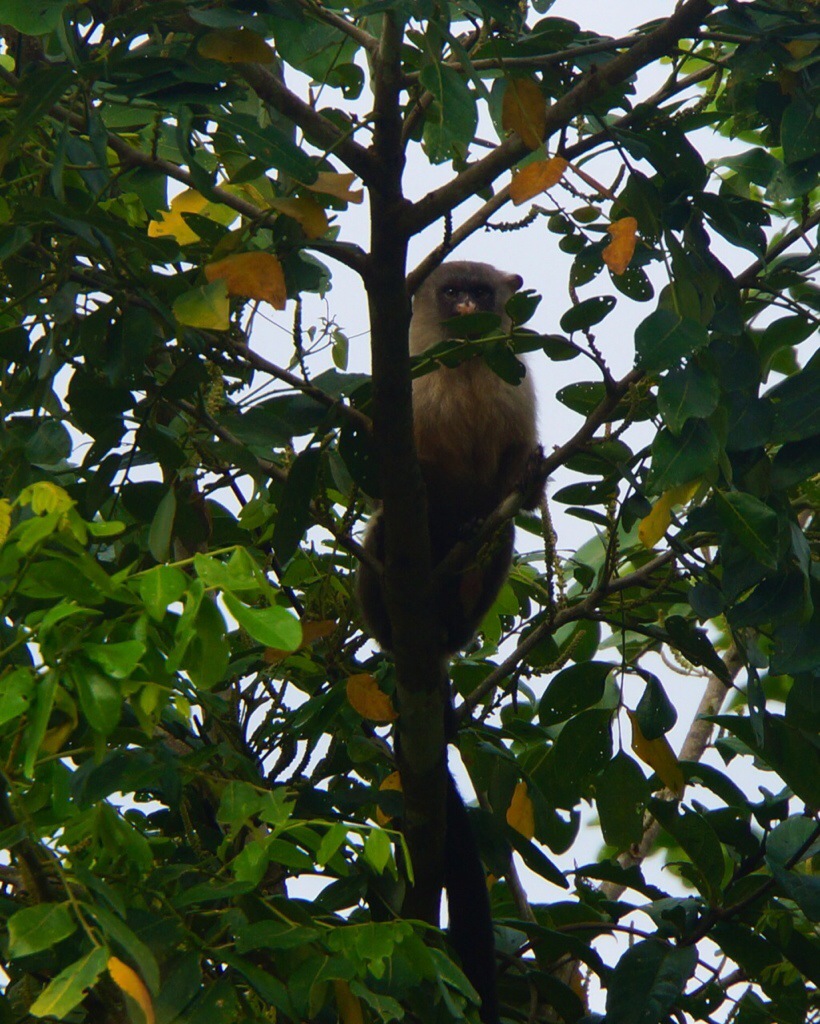

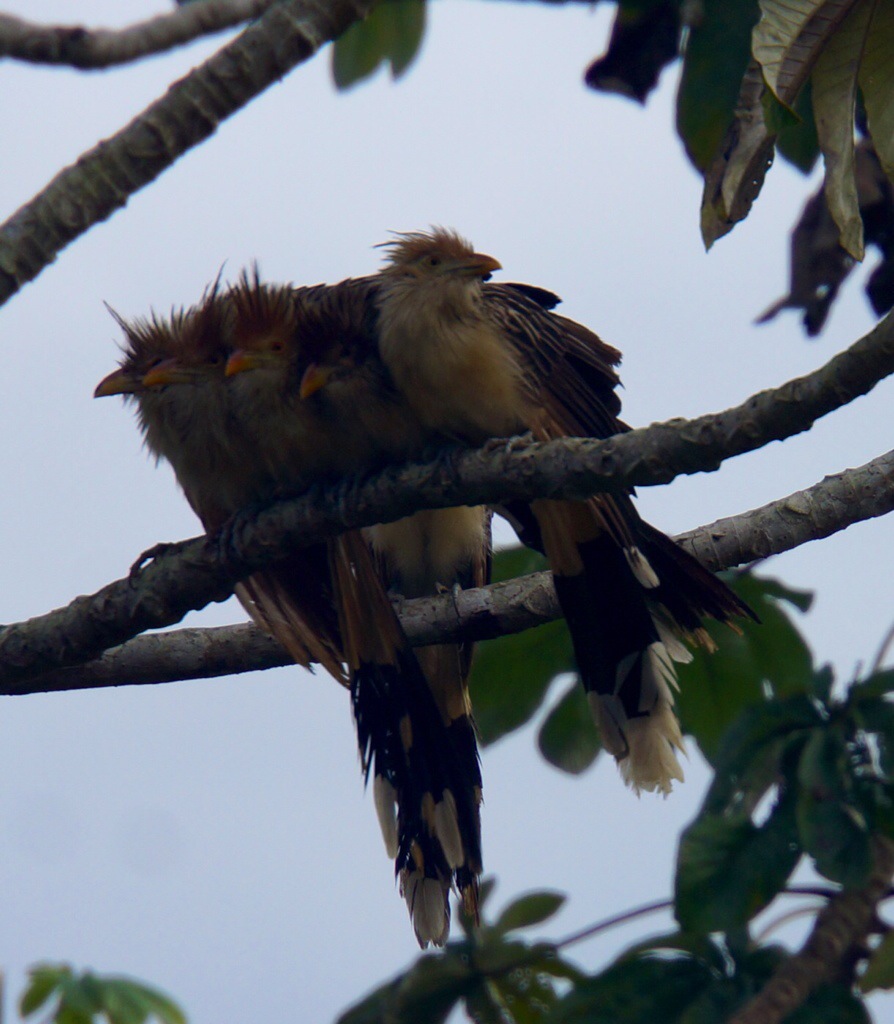
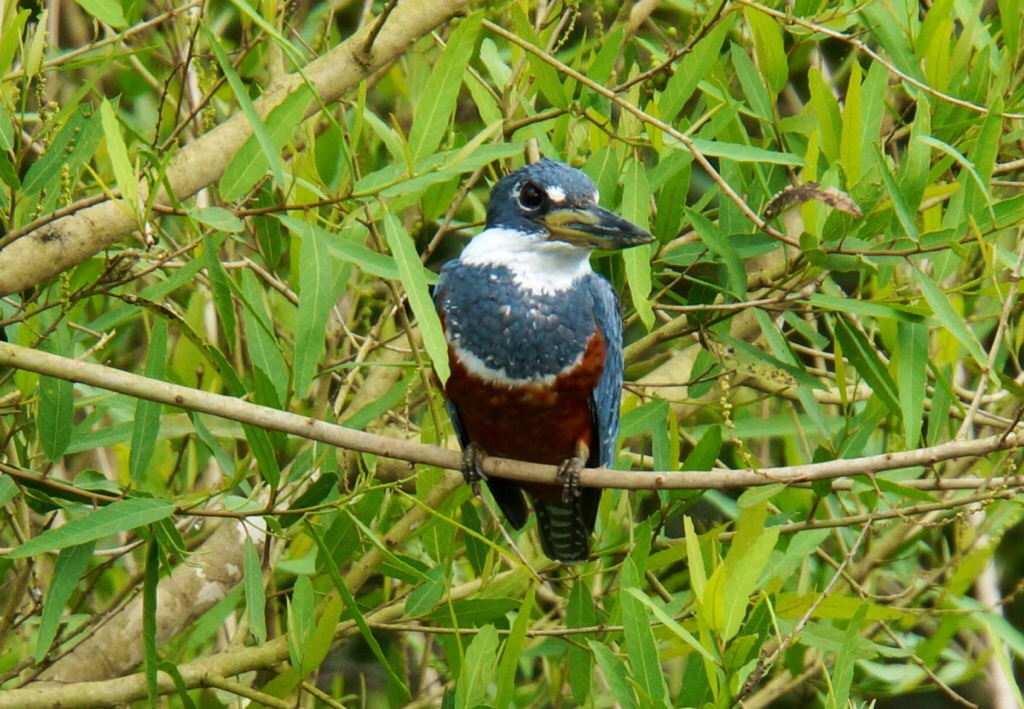
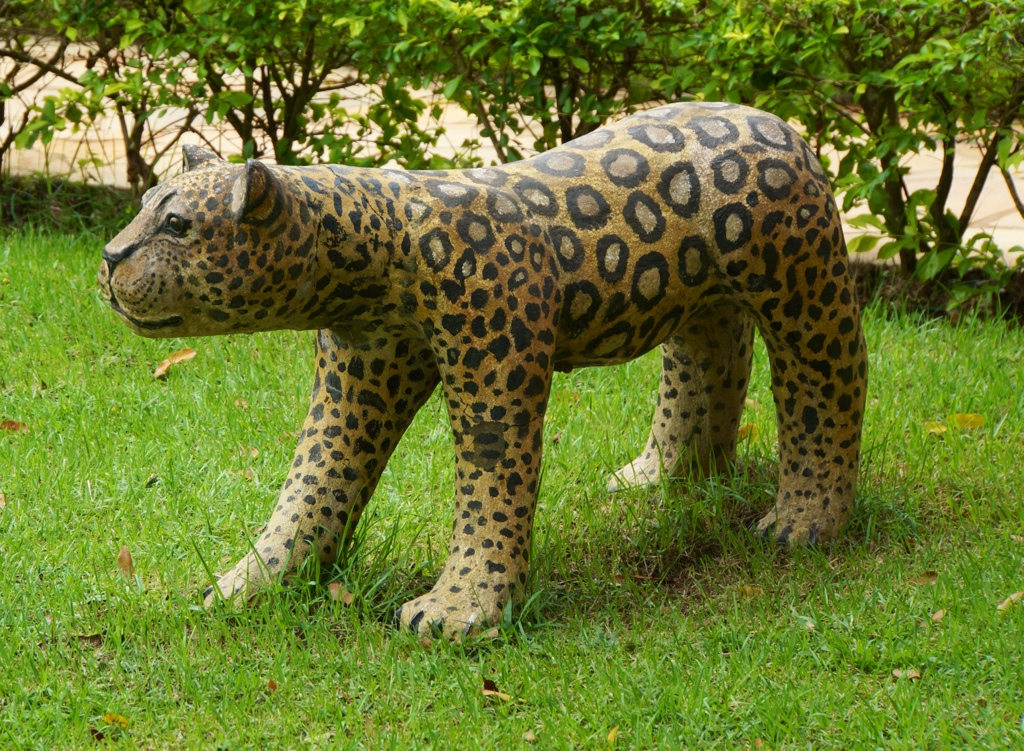
Down the road a piece, Carol and I are traded for a young British woman. Eduardo had told us that he was going to have a new guest arriving, so he was going to switch us over to another guide, who would drive us the rest of the way to the airport. Junior is younger than Eduardo, speaks English fine, knows about birds and drives a far more comfortable and air conditioned car. So, though we’d have preferred Eduardo for the full trip, overall it’s not a bad trade. Junior tells us that people are mixed as to their views of the World Cup. Poor people would have liked the money spent on schools, roads and health. The rich, who are the only ones who will be able to afford tickets to go to the World Cup, will just get richer. Junior makes a few bird sighting stops and we arrive at the airport a bit more than an hour before flight time. We breeze through check-in and security, and board our 2 1/4 hour flight to San Paolo.
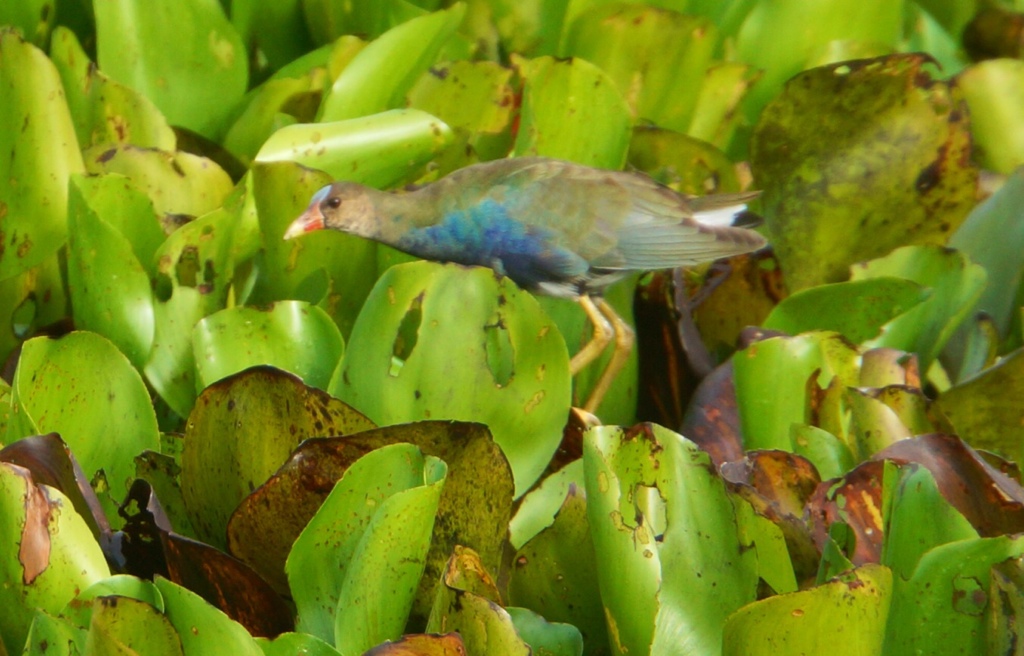
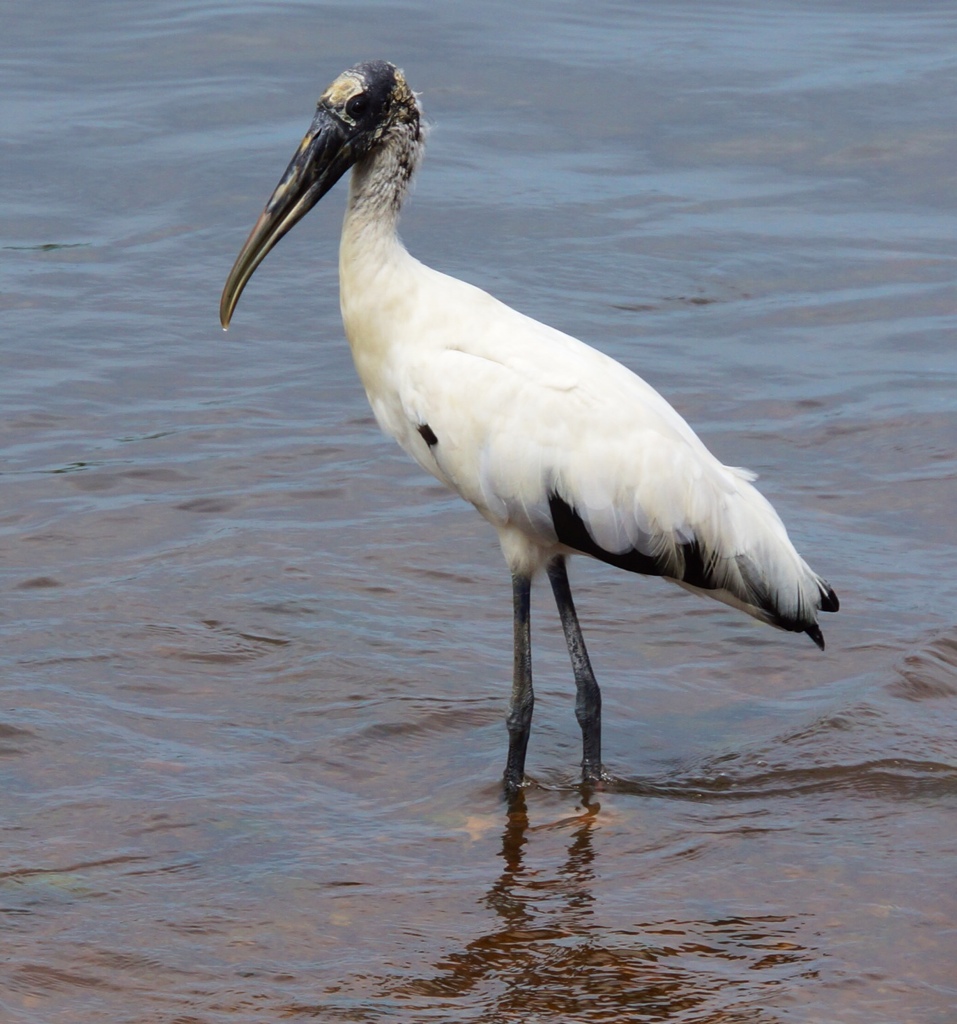
Now for some random thoughts on the trip, on Brazil and, probably inevitably, on life, too. For starters, as always, I’m grateful for the incredible privilege of being able to travel like this. It’s the biggest luxury that Carol and I indulge in, and I can’t think of one I’d enjoy more. Once again, it’s terrific to be able to do it, just the two of us, not subject to anybody else’s whims or schedule. Traveling in a group can have some advantages, but, for us, traveling alone or with only a few friends wins, hands down.
A corollary of the amazing trips we’ve taken over the years is that it’s extremely difficult for any new venture to join the upper echelons of our experiences. And Brazil does not make it to that level. If friends asked, we’d certainly put other destinations higher on the list. Knowing what I now know, I might well have opted for another destination, or, at least, changed the make-up of the trip. But, all of that said, I’m not sorry we went.
The trip had its moments, actually quite a few of them. In fact, it got progressively better as we moved along.
Salvador was not the cultural experience we had expected, and that was disappointing. But the old city certainly had its charm, and spending time with Rodrigo and Fernanda was good fun. The social project relating to treatment of women in the favela was worthwhile and interesting. We had one quite outstanding dinner, our guide was engaging and the hotel quite fine. We enjoyed the performance of the Ballet Folklorico and visiting churches celebrating St. Benedict was an interesting experience, too. Our time there was definitely colored by Carol’s chain having been ripped off of her.
Rio is an absolutely stunning city. Full stop. The views of the city from various vantage points were spectacular. The tour of the favela with Rodrigo was excellent and gave us some appreciation for life in the favela. Luiz did a nice job of showing us around, including two out-of-the-ordinary things, visits to the museum of naïve art and to the synagogue. The modern dance performance at the opera house by the Israeli dance company, Batsheva, was truly outstanding. Of course, that just happened to be in Rio; it could as well have been anyplace in the world. Visiting two samba clubs with Rodrigo was fun, but, sadly, I’m feeling that my samba heyday may well have passed me by. Our dinners with Mike Freed’s friends, Rosa and Paul, and with our friend, Andrew, were both terrific, and definitely highlights of Rio. We loved the Maria Ruisa Hotel/ guest house we stayed at in Maria Teresa and the funky, Bohemian atmosphere of the area. Again, our discomfort with safety, stemming from somebody trying to rob our guide in daylight in downtown Rio, did not enhance our stay in Rio. (But, as I said earlier in the blog, even those unpleasant and negative experiences educate us as to the way many less fortunate than us live their lives.)
The highlight of our trip was clearly the time we spent in the Pantanal, especially the last three days with Eduardo. The birding was both fabulous and exciting. Makes me think that if I were doing the trip over, I would substitute a few days on the Amazon for Salvador. I might also consider Iguazu Falls, if I had time, but I think the Amazon would take precedence.
Here’s something curious. I talked about the discomfort/lack of safety we felt in Salvador and Rio. And yet, we thought nothing of going off into the Pantanal alone with a complete stranger, a 44-year old guy we don’t know from Adam, and trusting him to drive us around on muddy roads over wooden bridges, run the motorboat and guide us through areas that contain dangerous animals. Go figure.
So, what made the Pantanal so great? Well, not to put too fine a point on it, nature is the nuts, Man. And I think it may especially be the nuts for city dwellers like us who seem (and are) so far removed from nature most of the time. Sorry if this sounds corny, but there’s something, well, primal about returning to nature. And if a great travel experience gets you away from what you do on a daily basis, for us, nature qualifies. (Makes ya’ think that maybe introducing a more regular dose of nature into our lives might not be such a bad idea.)
The three animal/birding experiences we’ve had have been markedly different. (I’m going to spare you including our search for tigers in India or any of my many scuba diving experiences.). The Galapagos, our first, was unique in that what we saw there is unspoiled and cannot be seen anyplace else on earth. Visiting everyplace by boat was also unique. Africa was, well, Africa. Perhaps there’s a mystique that enhances the experience, but the mystique is powerful enough that it seems real (if that’s not a complete contradiction in terms). Seeing the range of animals that we saw on our three trips there and roaming across the land with them is experiencing the wild in a way unlike anything else we’ve done. The Pantanal is certainly the best birding we’ve done, by far. Carol identified 81 species in our five days there. Unlike in Africa, though, you don’t roam the land in a jeep, but travel down the Transpantaneira “highway,” or walk through woods in search of birds. We saw very little animal life in the Pantanal, and certainly nothing that compared remotely to Africa.
Another major difference between Africa and the Pantanal was the accommodations, which were often spectacular in Africa and very basic in the Pantanal. I’ll admit to liking the luxury of Africa, the creature comforts. And I’m guessing that I’m not going to value creature comforts less as I age. To me, amazing accommodations enhance, add an element to, the travel experience. Given the option, I’ll take luxury. At the same time, the basic accommodations in the Pantanal did not ruin the trip, or come close to doing so, though nobody would mistake them for a Four Seasons.
Here are a fifteen differences between a Four Seasons/our Pantanal accommodations:
24 hours of electricity a day/12 hours of electricity a day
2. Used toilet paper flushed down the toilet/used toilet paper placed in a little plastic waste can
3. Brush your teeth with tap water/brush your teeth with a bottle of water
4. Running hot water in the sink/no running hot water in the sink
5. Choice of food/no choice of food
6. Perpetual hot water in shower/periodic hot water in shower
7. Shower curtain/no shower curtain
8. No bats in the room/average of one bat in the room per day
9. Amenities kit/teeny bar of soap
10. Shuttle bus from the airport to hotel/truck from airport to hotel
11. Choice of wake-up time/told truck leaves with you in it at 4:30 AM
12. Closet with hangers/no closet, no hangers
13. Laundry sent out, done magically/laundry sent out, done by woman with pail outside
14. Phone in room/no phone in hotel
15. Doorman/no doorman
I’ve thought some about the experience of going bird or animal watching, and why that seems so special. First, there’s the excitement of the unexpected. When you go out looking for birds or animals, you don’t know what, if anything, you’re going to find. And it’s even okay if you don’t find what your looking for. Finding jaguar tracks last night and the anticipation that that created, was almost as good as finding a jaguar would have been. Okay, so that’s a direct lie. But there’s an element of truth to it.
In fact, the opposite is also true, predictability makes the experience less compelling. For example, while seeing the river otters and kingfishers on the river the other day was great, the fact that Eduardo knew where he would find them made it less special. When we went on elephants to see tigers in India, the tigers had been located beforehand. That made seeing the tigers less exciting than spotting tigers unexpectedly from a jeep. No, please, tell me that I’m not really saying that seeing tigers on elephant back is not all that exciting.
Getting back to what makes birding so exciting, another part of it is the complexity. You can identify birds by their size, shape, color, sound (Eduardo was constantly doing calls, sounds to imitate and attract them), flight pattern and habitat, and undoubtedly in other ways I’m leaving out. And, the ability to identify and name them is, well, Biblical. Didn’t God give Adam dominion over birds and animals by giving him the power to name them?
I struggle a bit with the trade offs between just seeing birds and photographing them. Certainly, you see them far better by just looking through glasses (at least with the photographic equipment that I have). But photographing them allows you to see them later, and share them with others. Of course, you could do that using a bird book, which would have far better photos. But, c’mon, that’s cheating, and, besides, it deprives you of the enjoyment of taking and working on the photos. Thinking about this now, I think I may strike the balance a bit differently next time, spending a bit of time looking at each bird through the glasses, before shifting to the camera.”if I miss a few shots in the process, no big deal.
And, since you raised the question, photographically, this will not be one of my more satisfying trips. That’s because my primary interest in photography is people, and I took very few photos of people on this trip. That doesn’t mean that I won’t spend weeks working on these photos and enjoying that. I will, but it won’t be as interesting to me as it would if I were working on photos of people.
Okay, time to end this rambling. Reading back over this summary of the trip makes me realize that it was a pretty damn good trip, after all. It’s been fun having you along, and I’ve appreciated the many comments I’ve gotten from you, both on the blog and in emails that you’ve sent. If you’re game for returning to Ghana and Nigeria (or, for new followers, want to try it for the first time), Carol and I will be returning with our good friends the Kipharts and the Olopades in late August. We’d love to have you join us.
One last photo to demonstrate how sometimes you hunt the world over for something that is sitting in your own back yard, or, in this case, your garage.
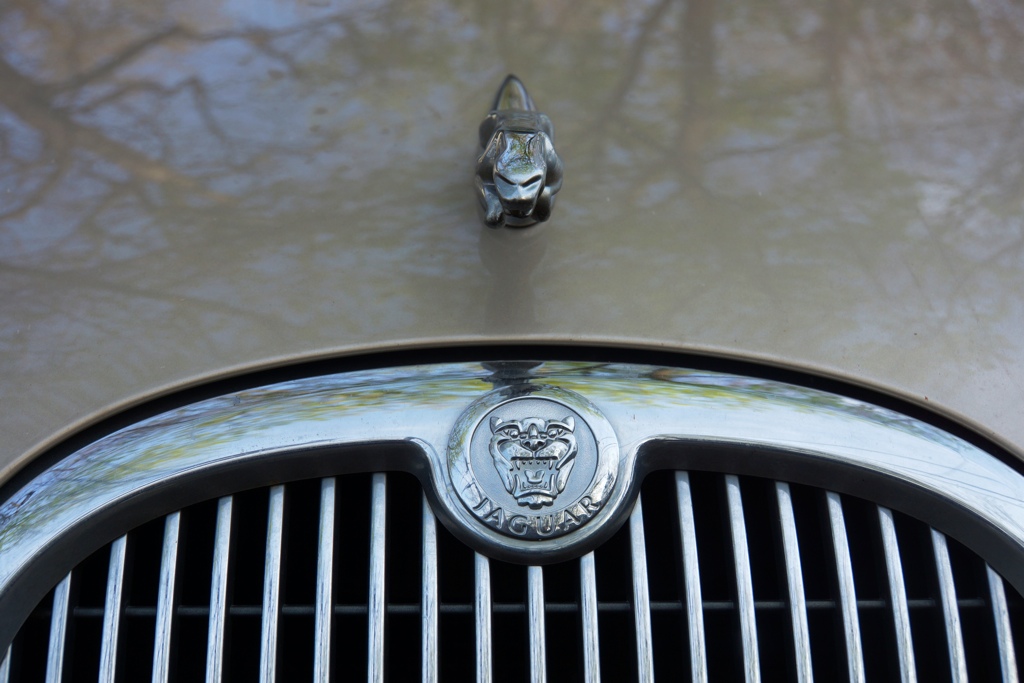
May 6
Our last full day in Brazil starts with a 4:30 AM ride that turns up nothing amazing.
Breakfast, again very good, back at the lodge. After photographing, mainly toucans, around the lodge, in light that is not very good, we set out on foot at 7:30, towards Eduardo’s Uncle Tutu’s cattle farm. It’s already sultry and overcast. Eduardo says it will rain. Heat means a lot of sweat, which makes the bird watching, and walking, less enjoyable.
Arrive at Uncle Tutu’s cattle farm as Uncle Tutu is heading out. Bird life on Uncle’s farm is different and about as amazing as at Jaguar. Mercifully, it begins to cool a bit after awhile, as we get a very light drizzle. Somebody from Jaguar comes to pick us up, and we get into the truck as it begins to rain, then pour very hard.
Get drenched walking the very short distance from the truck to the dining room, but the cold and damp actually feels good. Lot of rain comes through the roof and we sit in chairs that rest in puddles. Carol heads back to our room in her rain jacket to read. I stay in the dining room and pour over a couple hundred photos I took this morning to whittle them down for the blog. The whittling is a very imperfect process, as I eliminate photos based on tiny thumbnails. So, I’m not necessarily working from the best photos, and I can do only very minor work on them before posting. So, with those excuses, here’s a selection from this morning, including one of Uncle Tutu.
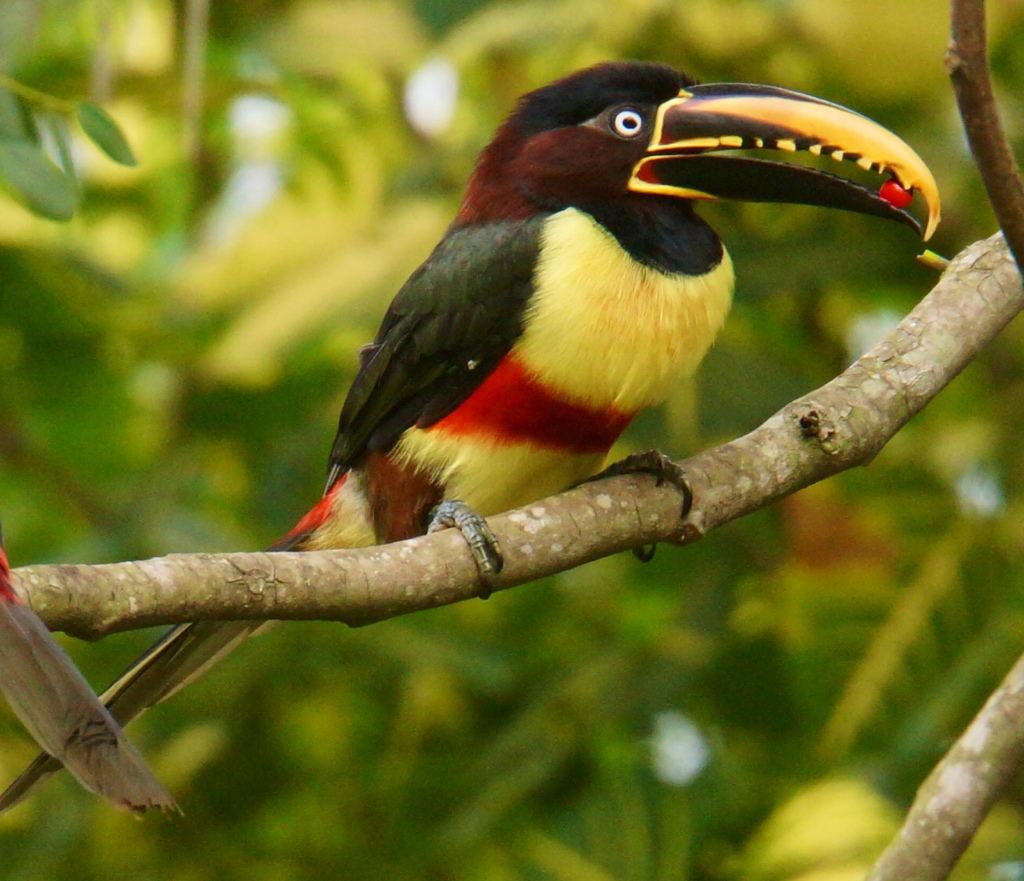
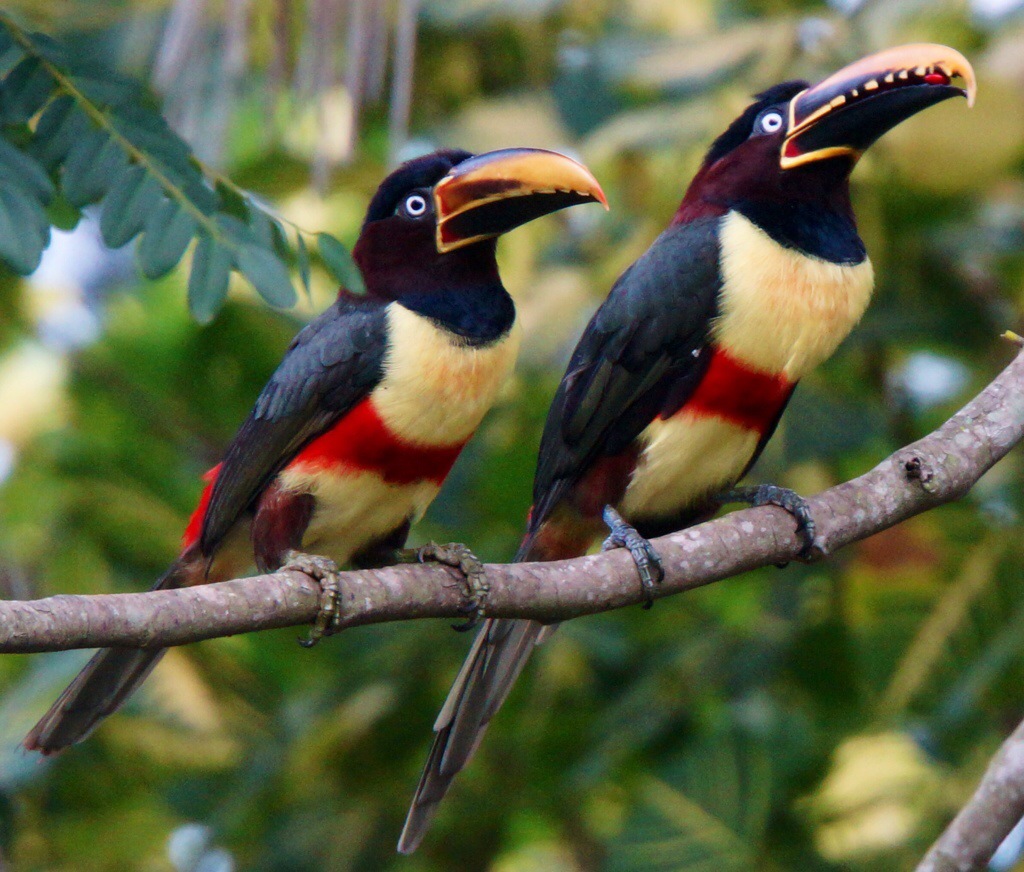
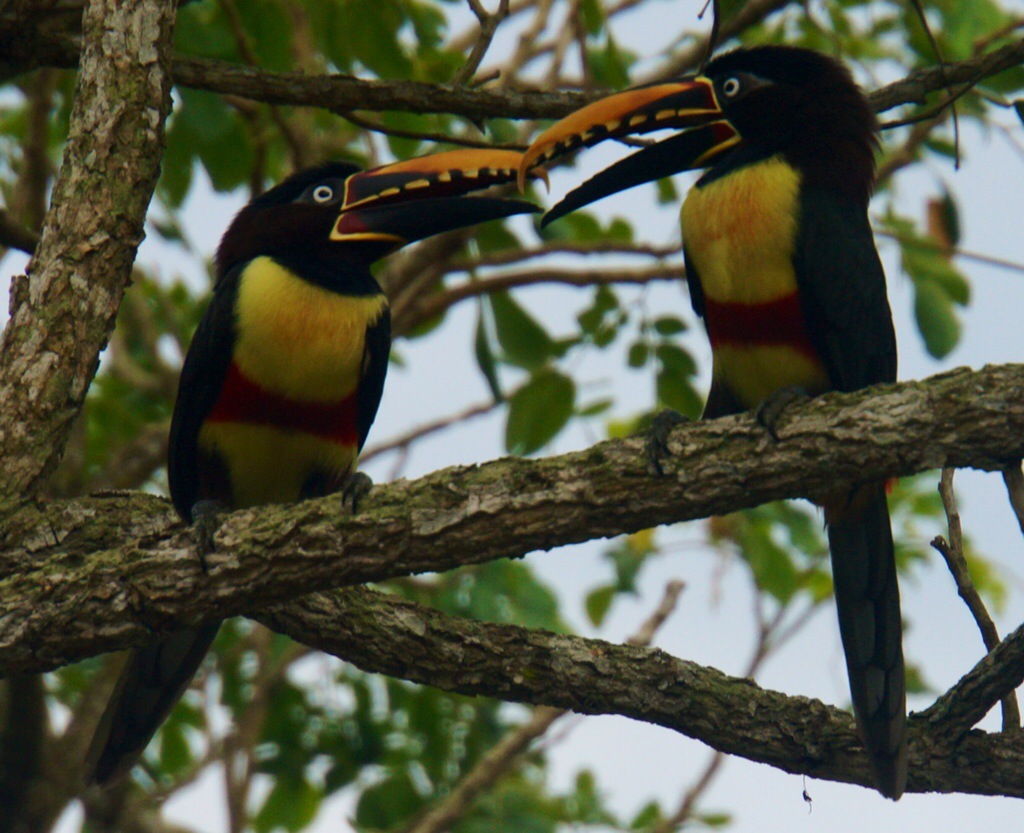

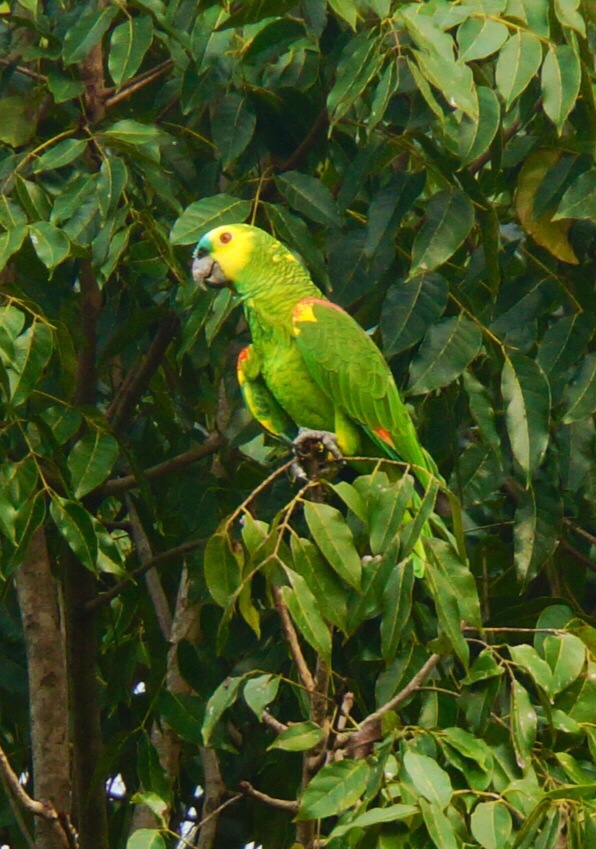
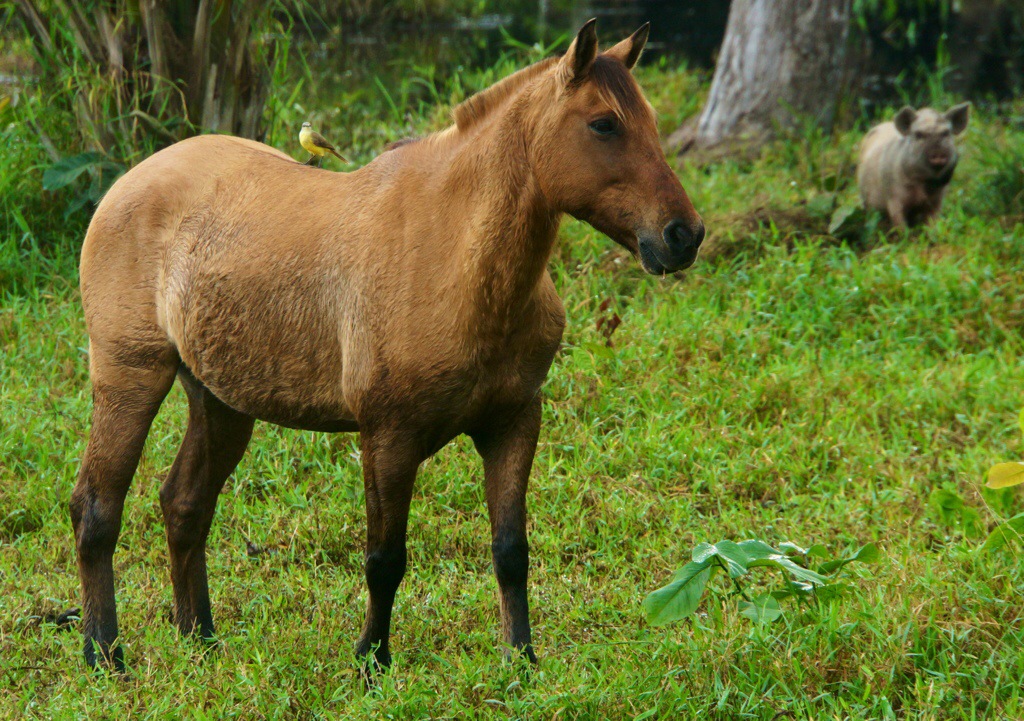

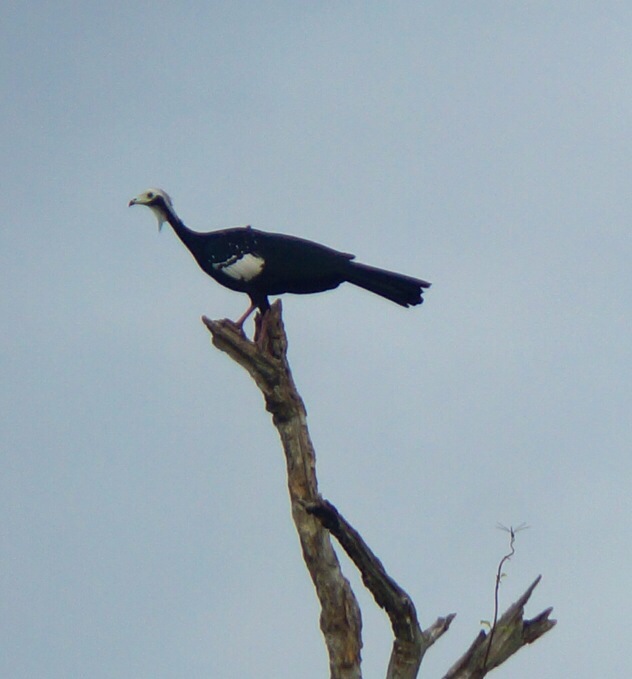
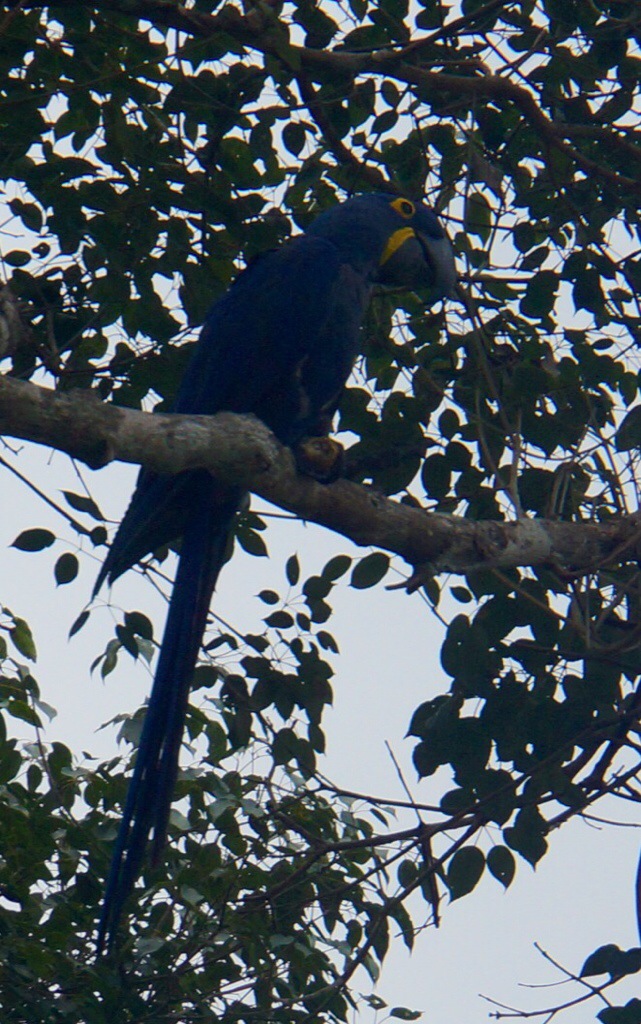
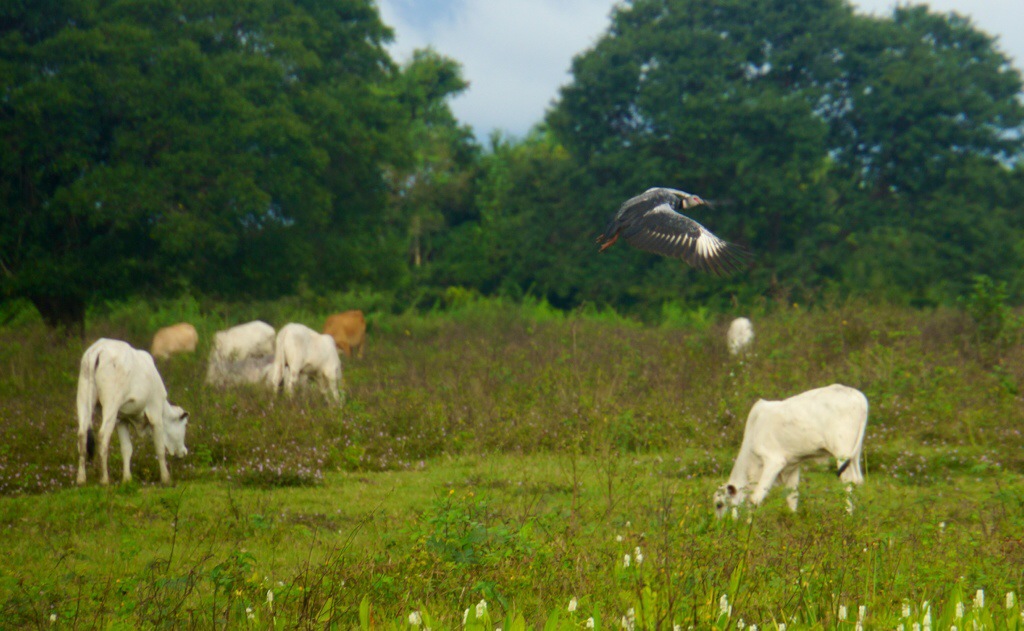

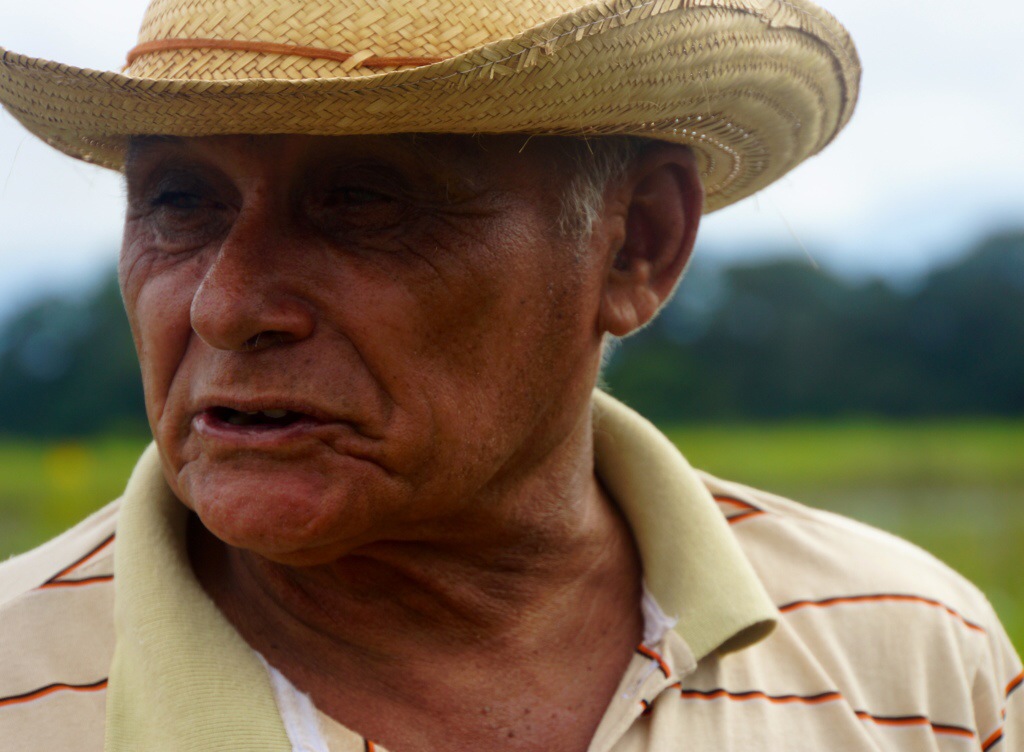
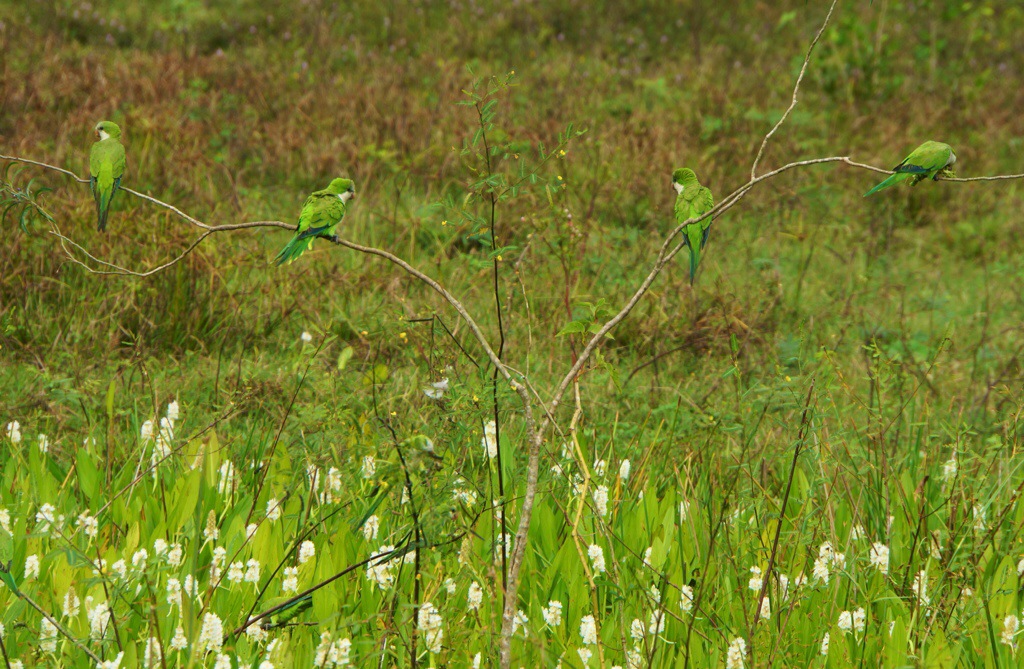
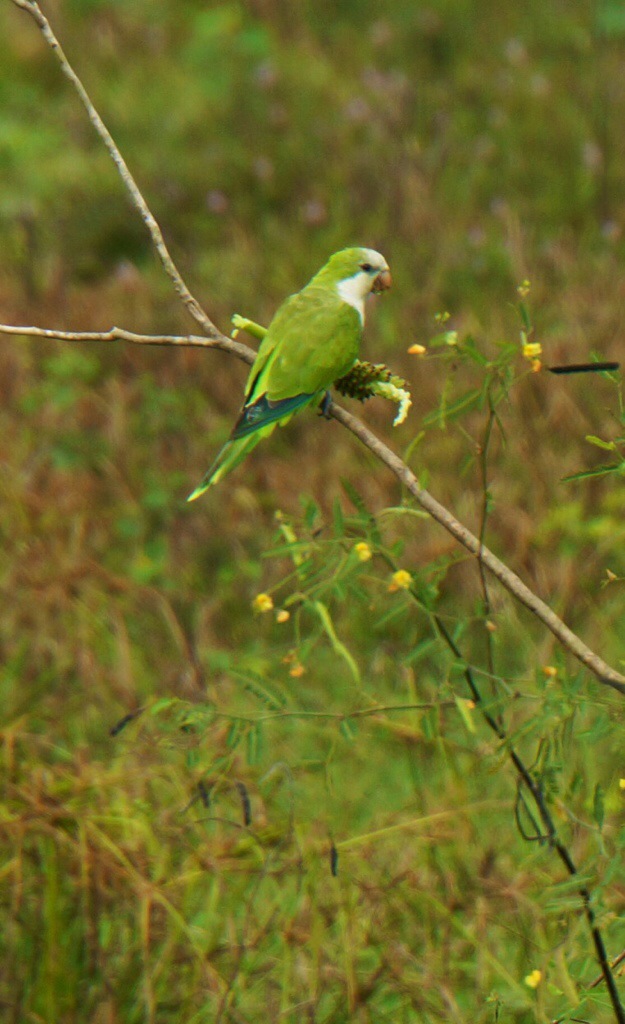
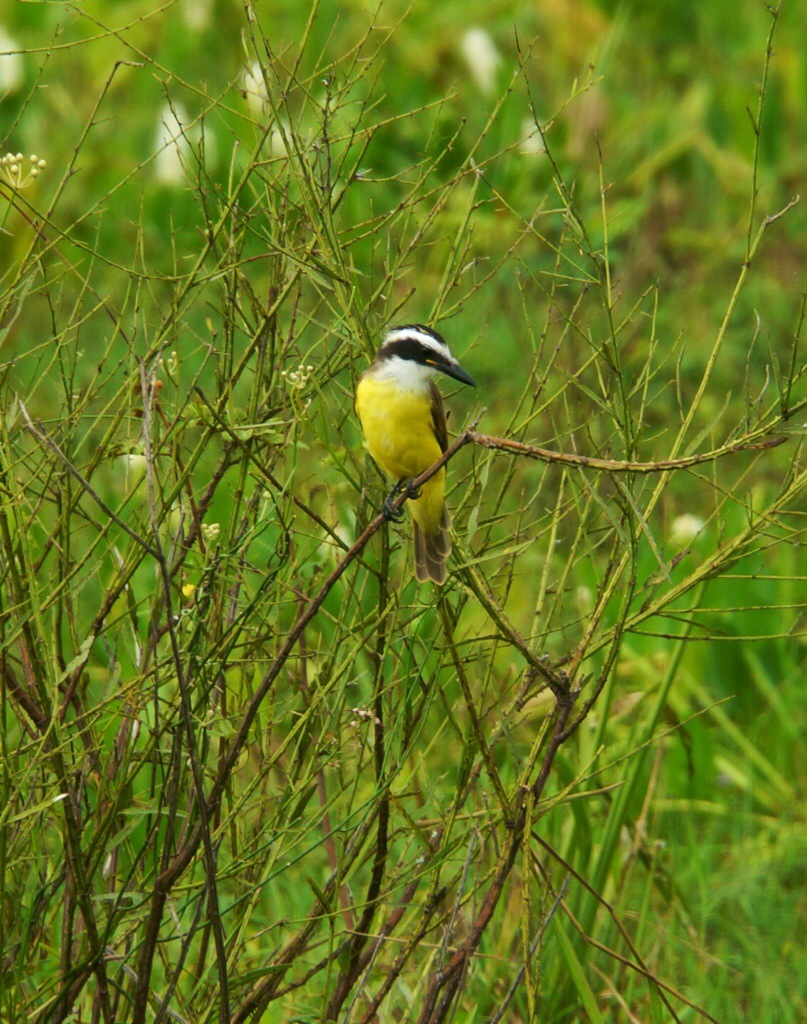
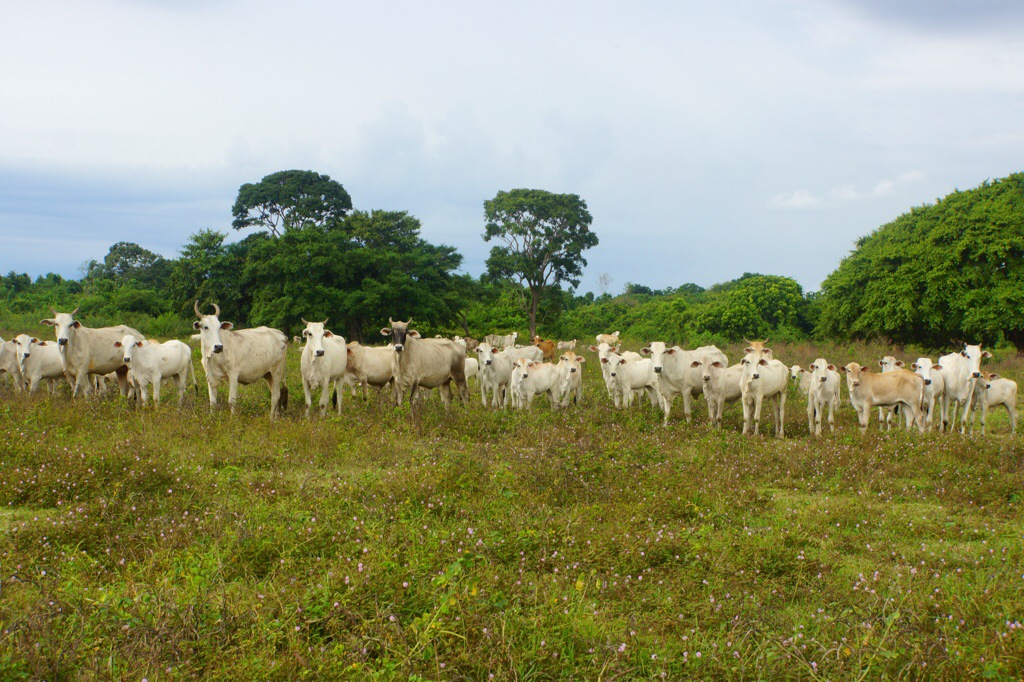
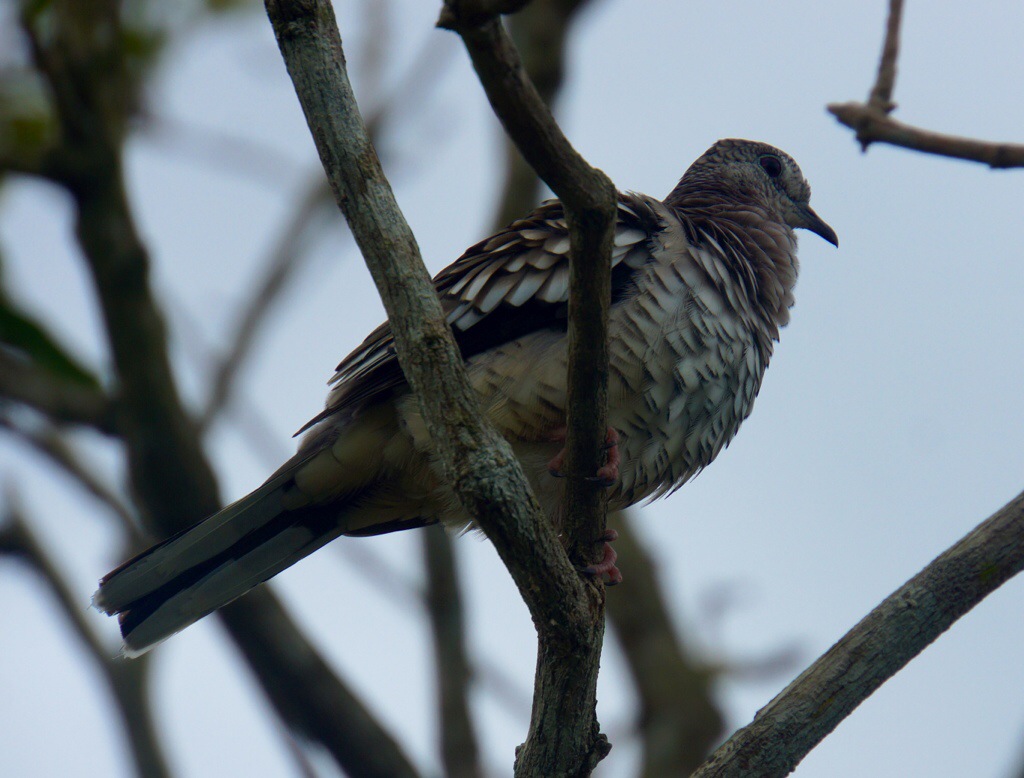
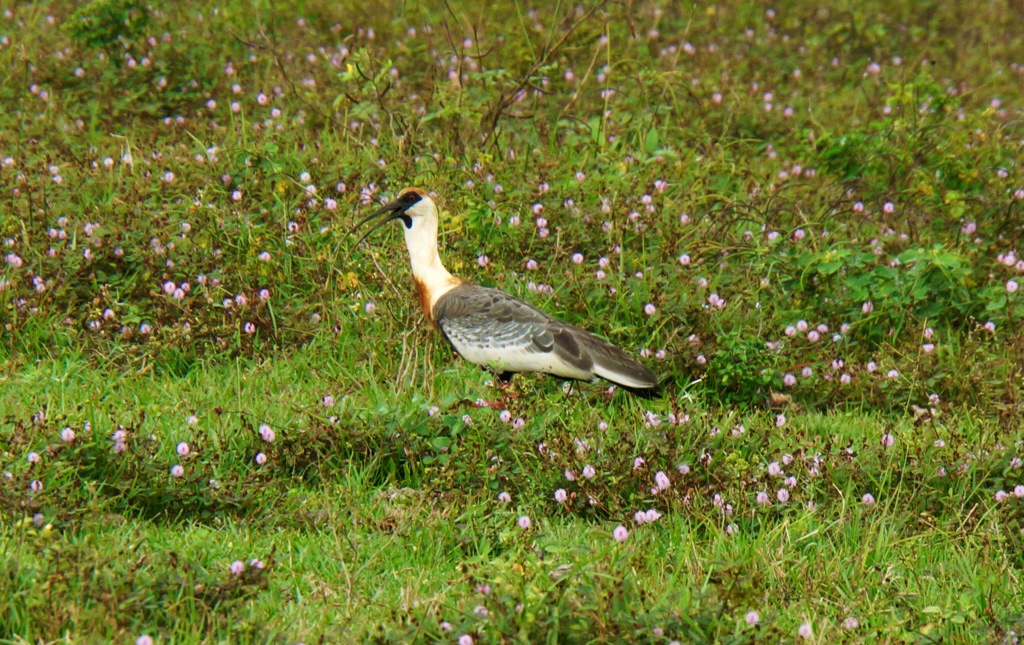

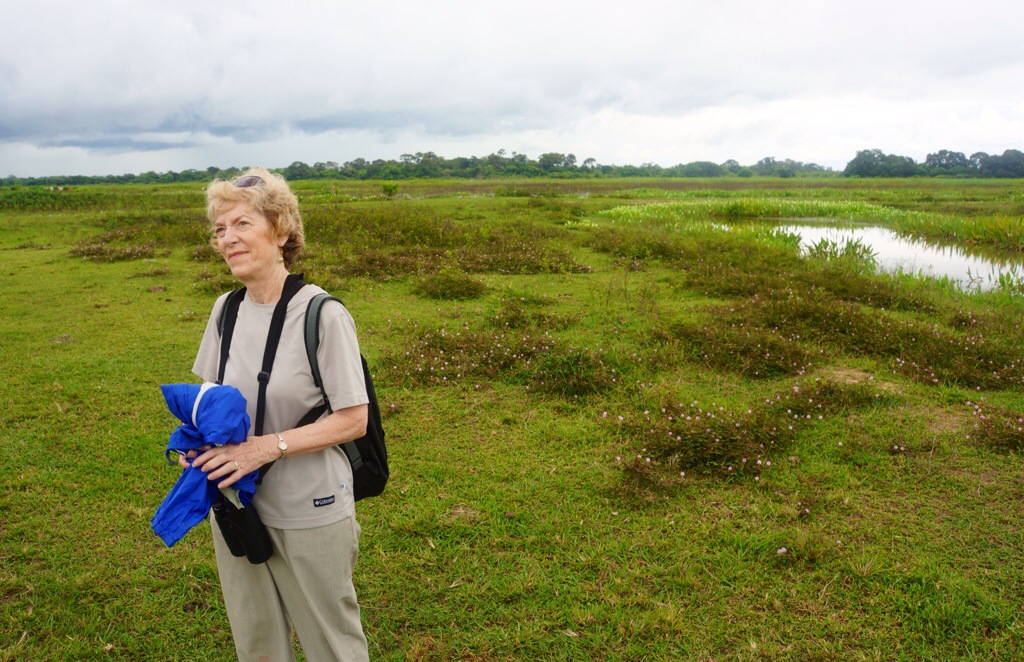
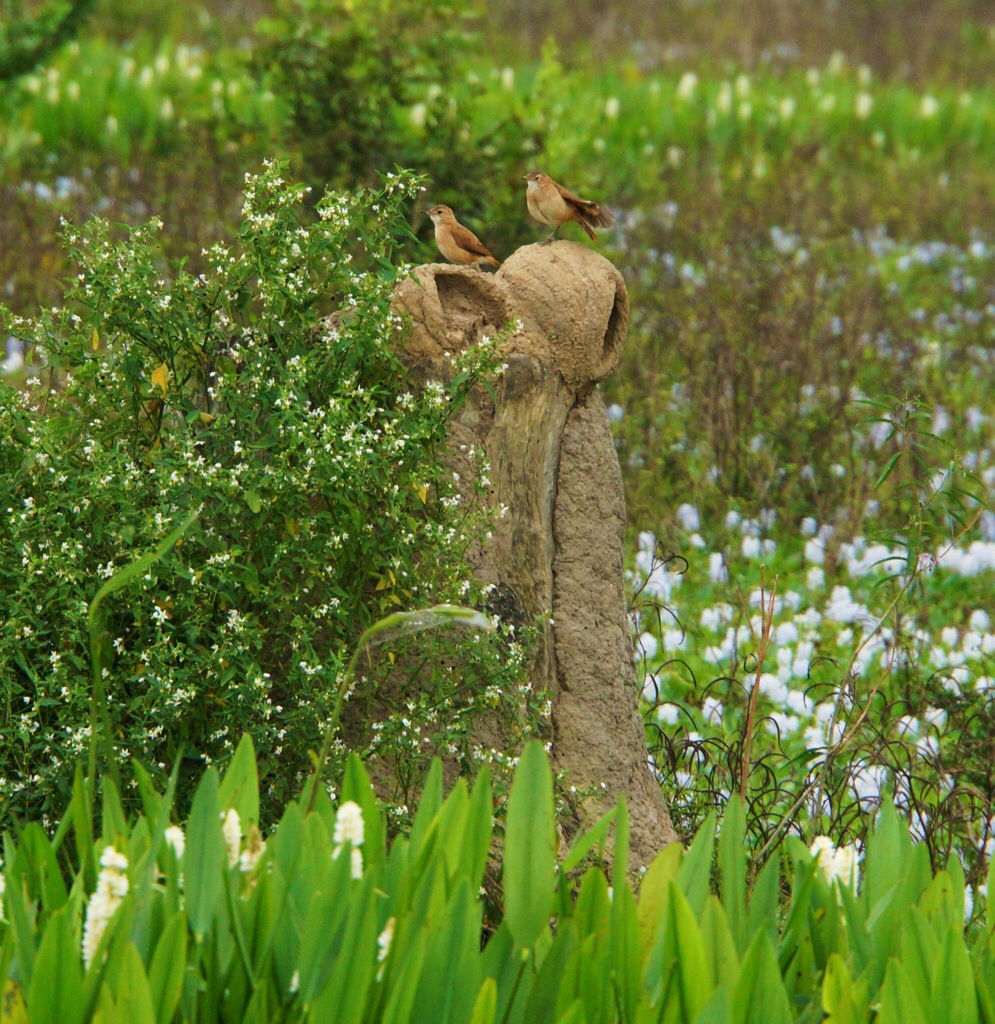
After yet another good lunch, we wait until three for an afternoon drive, anticipating that the rain will have let up by then. But it has not, so we wait another half hour, then set out in what is still a very steady rain. The rain has had the salutary effect of cooling things off dramatically, enough so that I’m comfortable wearing my rain jacket for the first time this trip.
Major sighting this afternoon is a tapir, which we see for about three seconds as it runs across the road. The tapir is a large, horse-sized animal that lives on a vegetarian diet. Jaguars may try to attack them, but, if they do, the tapir runs into the woods and knocks the jaguar off with the brush. A few other very nice bird sightings, including the capped heron and the purple gallinule, but low light permits only poor photos. Also saw two cavys (rodents). Below, too, are pictures of the famed Transpantaneira Highway and one of its many wooden bridges.
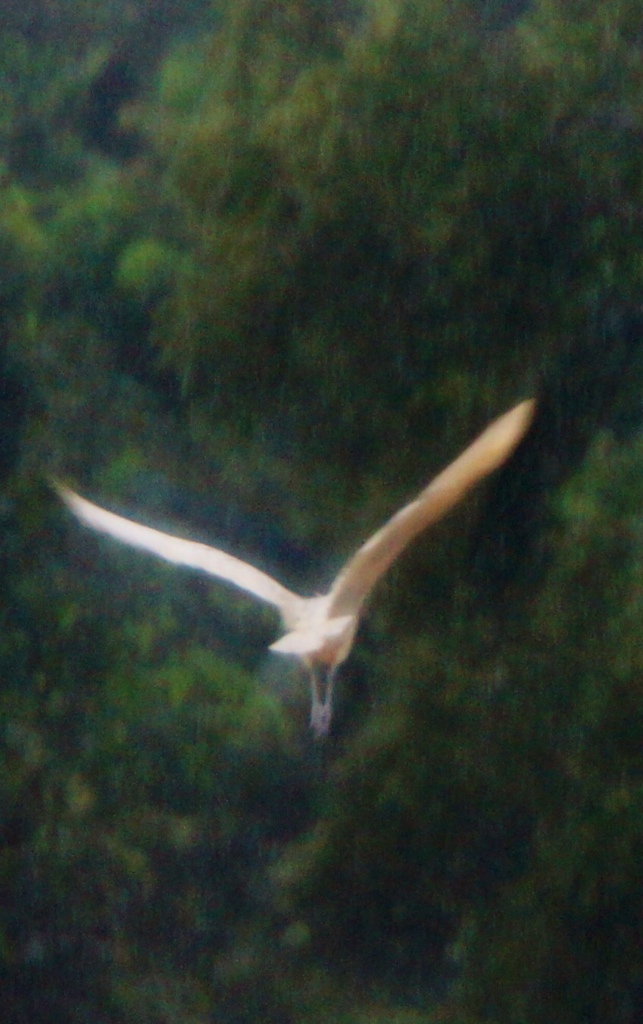
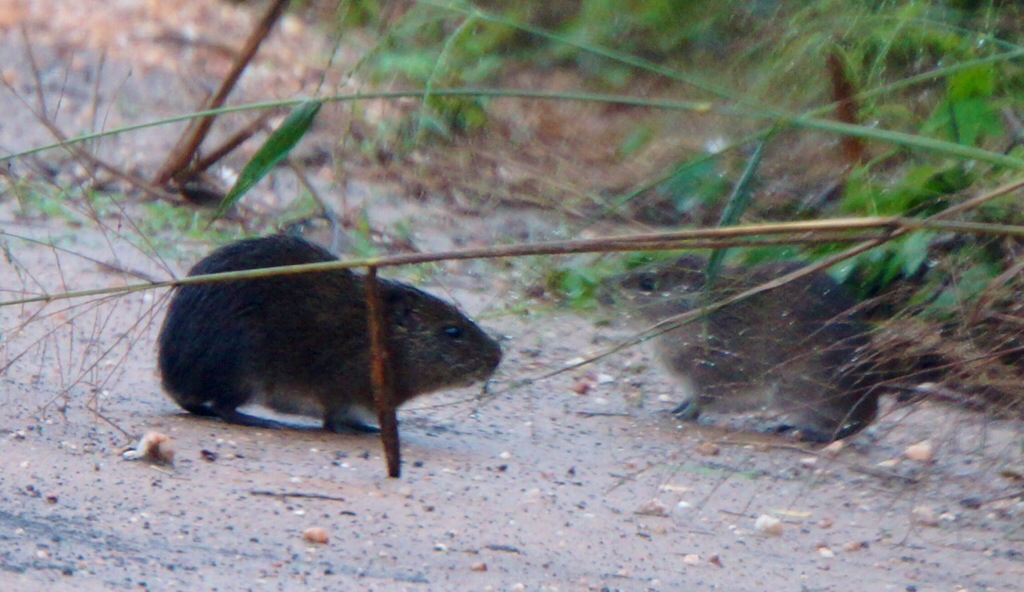
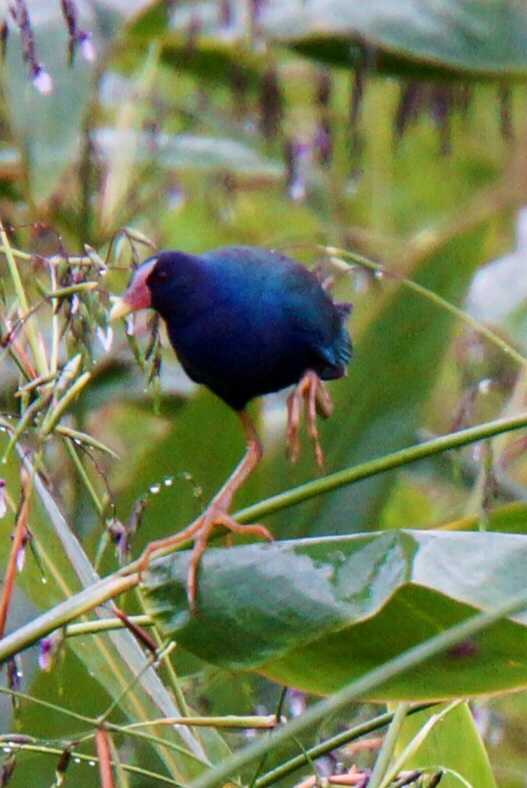
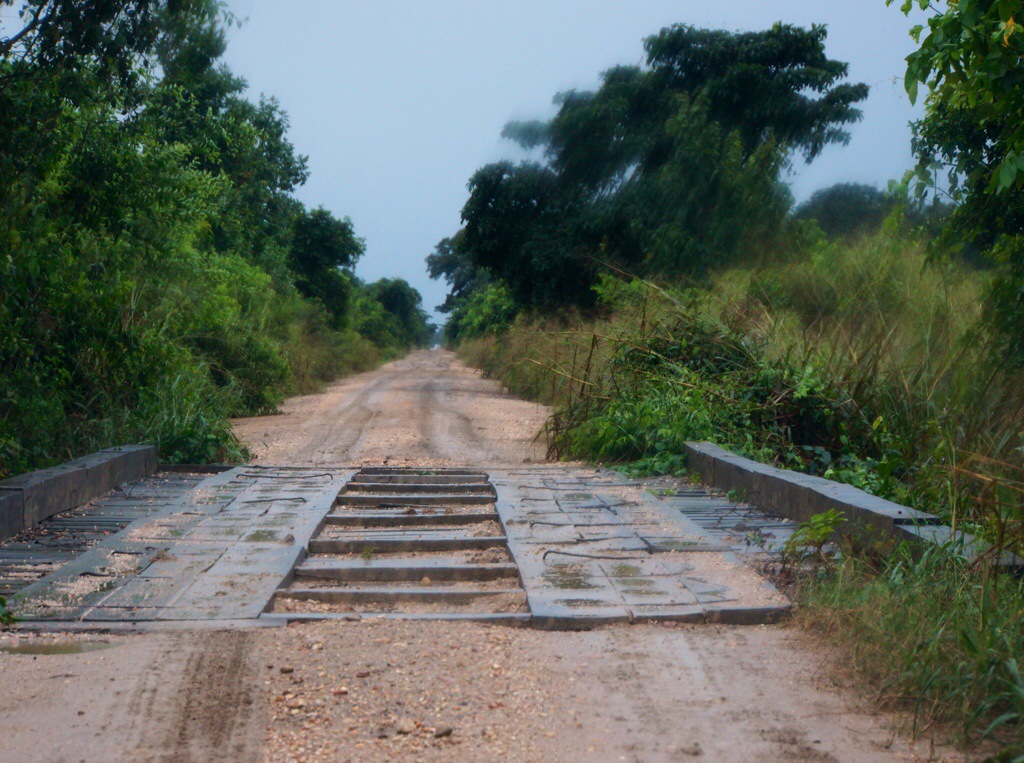
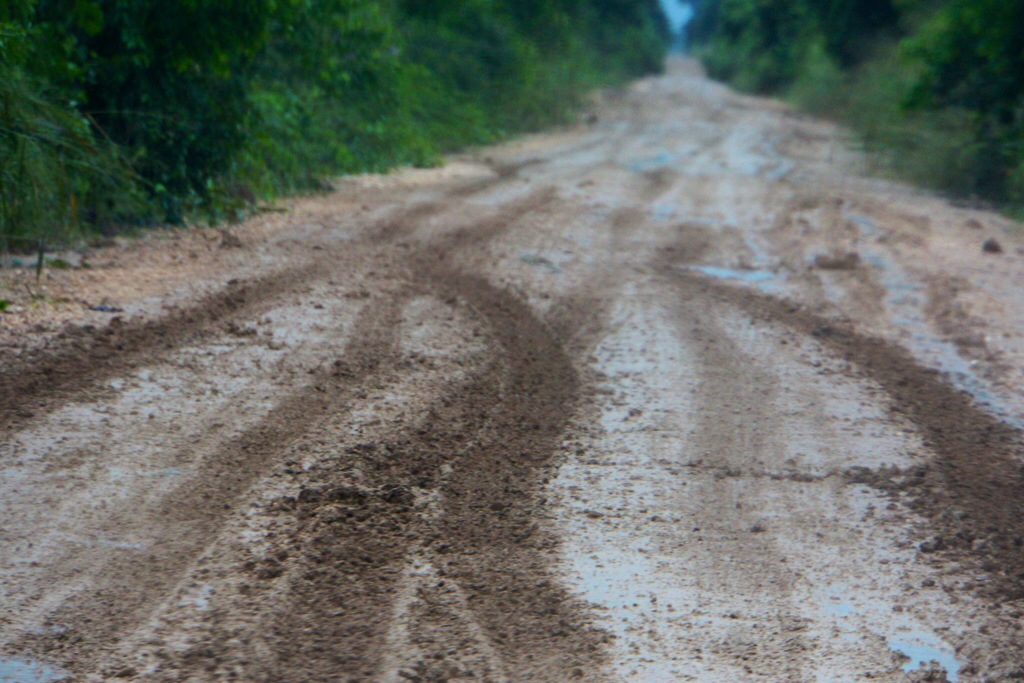
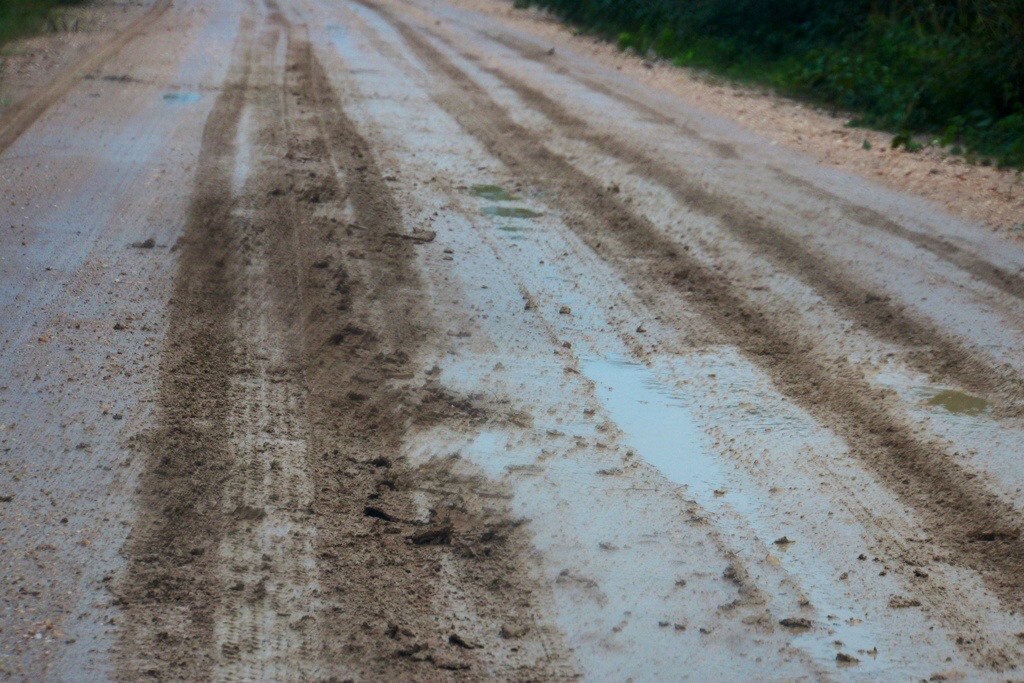
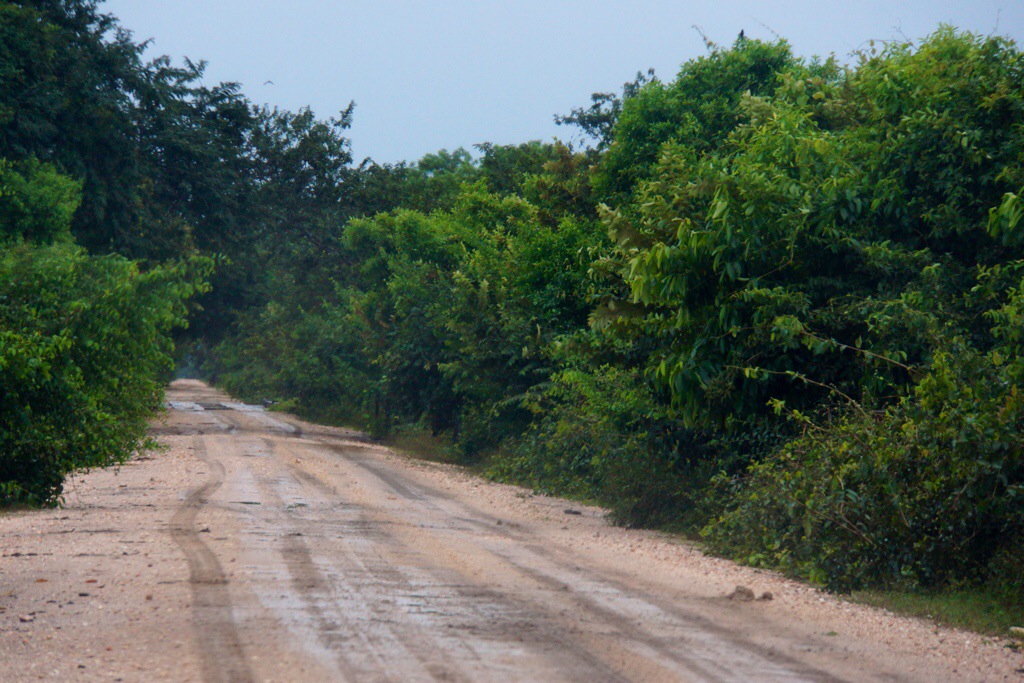
After dinner, a last night drive in an effort to spot a jaguar. We find fresh tracks, but, despite valiant efforts by Eduardo, fail to find the actual jaguar. As Charlie Brown would say, “Curse you, Red Baron!”
|
|










































































